Ultimate Electric Vehicle Buyer's Guide
The sales of electric vehicles have soared. This is a comprehensive guide to buying one, the primary ownership experiences you can expect, and the drawbacks you need to consider as you divorce yourself from combustion.
Electric vehicles are a very good idea for the certain driving applications which quite likely apply to you and your life.
If you’re considering buying an electric vehicle in the near future, you need to do your research, which is why you’re here. Right?
In this extensive in-depth buyer’s guide you’ll get a definitive and comprehensive assessment of what purchasing an electric vehicle will mean for you, in both positive and potentially negative ways.
This is not a warning nor an endorsement of electric vehicles per se, but an honest, fact-based approach to what your life will be like when you buy an EV, for better or worse.
The purpose of this report is to make you an informed consumer who is fully aware of what the benefits and deficits are with this serious purchasing decision.
Since 2019 the sales of electric vehicles have increased significantly. In fact, since 2019, fully-electric vehicle sales have gone from just 1523 units to 33,410 units. That’s an increase of over 2000 per cent. That’s not a typo - two thousand per cent, in just five years.
That’s the power of federal government subsidies influencing the notionally free market.
Other big market changes have included the arrival of many new brands which didn’t exist in the Australian market until very recently, and many established brands also now offering fully-electric models in addition to their combustion powertrain models.
But most mainstream motoring media outlets are more focused on telling you why EVs are simply fantastic, without telling you about the major drawbacks and technical considerations you need to make before purchasing.
Many reviews on electric vehicles simply lack and technical understanding of electric vehicles, meaning you either don’t get the big picture or simply miss important details. Or, key problems are minimised using ‘soft language’: see George Carlin for more.
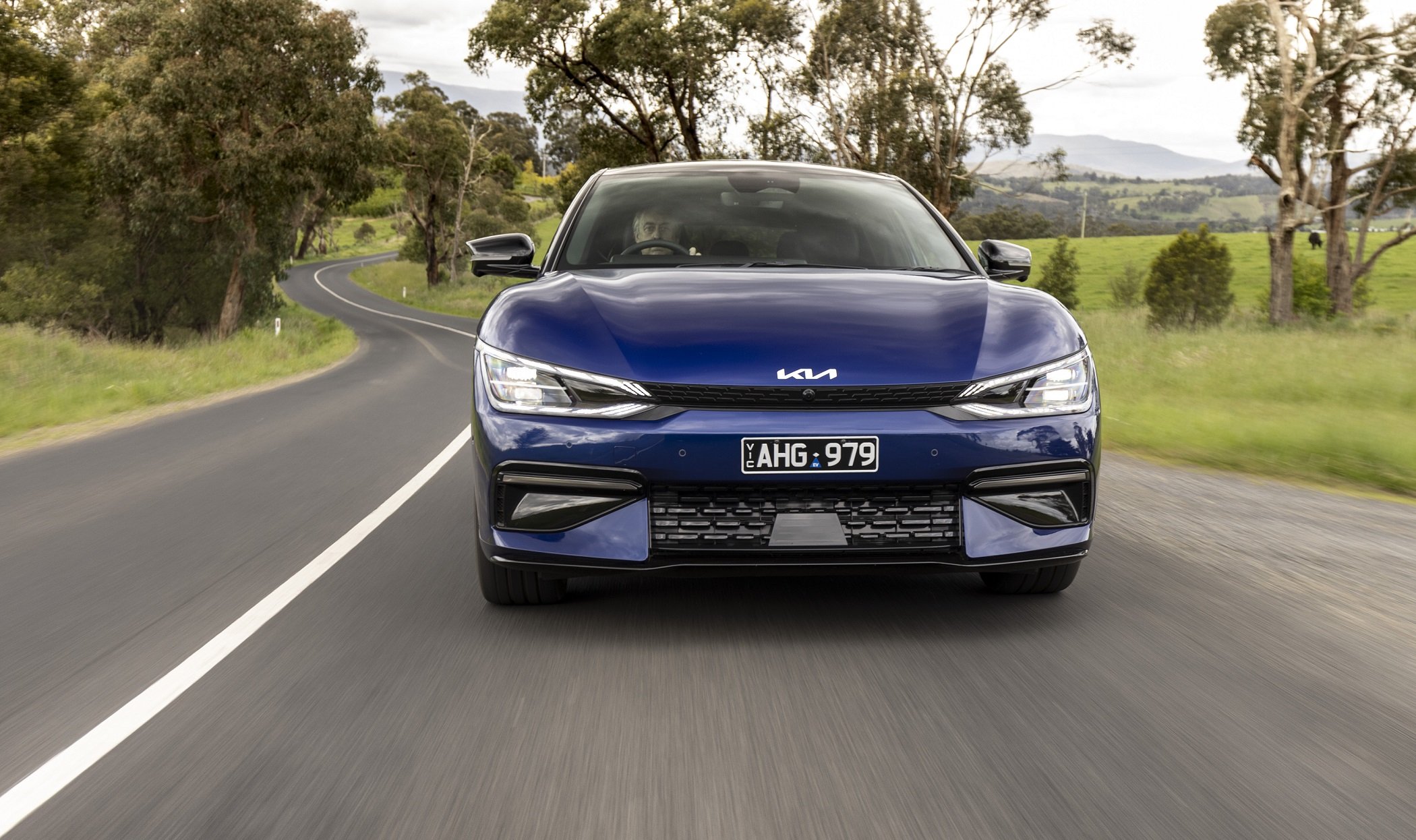
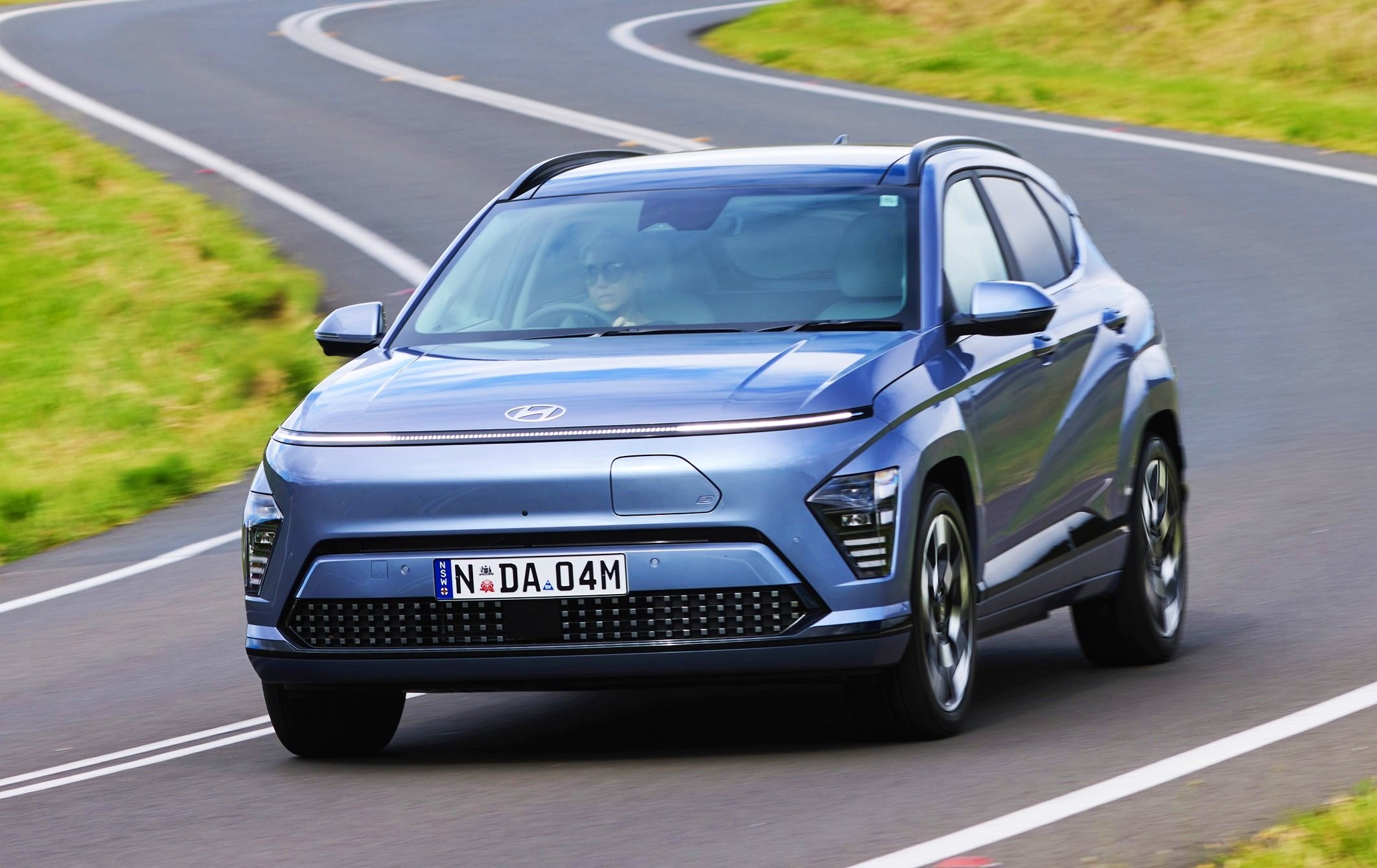
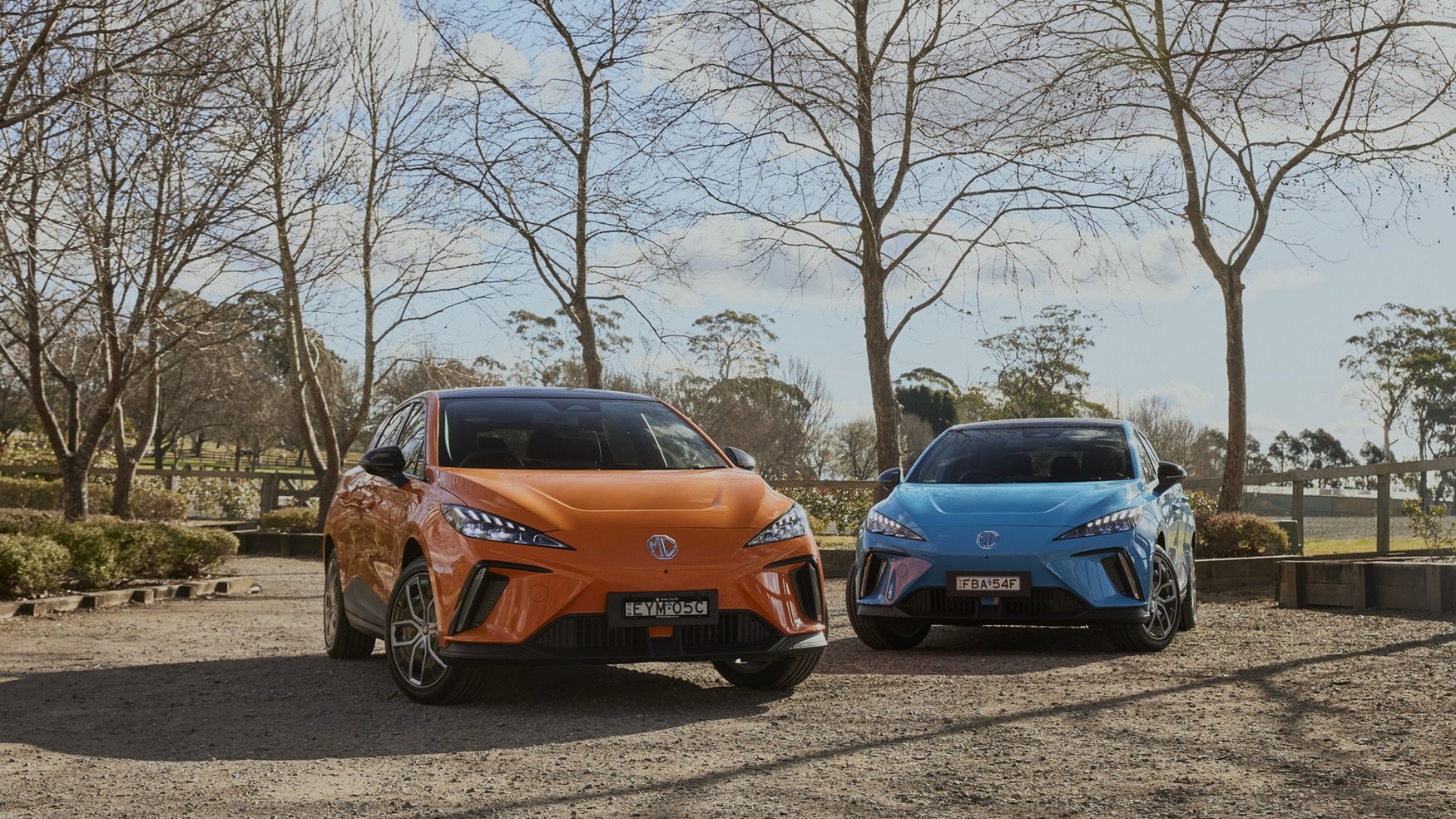

If you’re genuinely interested in purchasing an EV, you might be keen to see which models fit into the federal government’s novated lease fringe benefits tax break. If so, click here for a full list of green cars that qualify for zero FBT >>
This report will not use soft language or shy away from the reality you need to accept in making this five- or six-figure purchase.
CONTENTS
Looking for specific information about buying, driving or charging an EV? Click on these links below to skip ahead.
Modal Separation: why EVs handle differently
Performance
Limitations
Tyres
Saving the planet: greenwashing
Sourcing raw materials
New brands >> : Poor customer support
Dodgy brands >> : Poor reliability
Bad attitudes and cult members >>
Resale value & depreciation >>
Finance
Long-term ownership questions
Novated leasing
RITUALS
Have you ever stopped to consider just how ritualized your existence is? We are such creatures of habit. But there is one ritual that you take part in, routinely - and it’s suddenly under threat.
You cannot escape rituals. We have rituals at the start of life, and rituals at the end. And in between - show me what’s not a ritual.
We’ve got rituals for each end of the day. There’s annual rituals, rituals for education, rituals for your deity of choice, and if you want to tie the knot, we have a ritual for that. (And then, if you want to untie it, later, ditto.)
Every time we kill off a socially entrenched ritual, a new one takes springs up and its place. And electric cars certainly do offer you a chance to get back every week 10 precious minutes of your limited living time.
Modern life really is all thanks to hydrocarbons (what we normally call oil, coal and gas). As a species, we’ve evolved into ‘petro-sapiens’.
It’s unknown how many millions of humans are tipping liquid fuel into their vehicles at any particular time, but you can’t count that high before you die.
But is this ritual really on the brink?
Of all the motoring journalists in Australia, I would have to be - let’s be kind - the most pragmatic about EVs. Some would say, a hater. But they’re mostly members of Club Tesla and the EV Fanclub.
If you fill up your petrol SUV once a week, that whole process takes about 10 minutes, including:
turning off the main road,
waiting for a spot at the bowser,
taxiing up to the correct position,
getting your wallet out,
opening the filler flap, then the cap,
grabbing the right nozzle and standing there while 40-odd litres is chugged down,
then locking everything back up,
walking in, waiting for the next guy in line,
refusing the 2-for-1 Snickers deal - twice - then tapping your card, taking the receipt,
walking back out, getting in the car and leaving
If you take those 10 minutes, multiply them by 52 weeks per year, that’s 8.6 hours of time burned just filling up with fuel in a year. Do that for 10 years, that’s 86.6 hours or 3.6 days. After 50 years you’ve lost 18 days to brimming your tank with ‘gas’.
NO MORE FUEL BOWSERS is a win for consumers. You won’t miss re-fuelling at all. No sane person would. There’s no reason to be nostalgic about refuelling at the bowser ever again.
However, it’s a self-deluded fantasy to think that owning an EV means you’ve divorced hydrocarbons (liquid fuel). That’s just you spending the big bucks to weaponize your confirmation bias. If you own an EV, you are just as dependent on hydrocarbons as some guy in a big, fat diesel 4X4.
If you took hydrocarbons from your life there would be no house to live in, no food in your non-existent refrigerator, no clothes to wear, no pharmaceuticals, no steel to build the car from, and no roads to drive it on - among other things. They’re called ‘facts’. You don’t have to like them.
Of course, most EV evangelists are too stupid and/or cognitively dissonant about how the world actually works, to acknowledge their ongoing hydrocarbon dependency.
DRIVING AN ELECTRIC VEHICLE
As an uplifting consequence of driving this type of car, is never having to visit a service station except for inflating your tyres. So that’s nice. But driving an EV is certainly different - and not in a bad way.
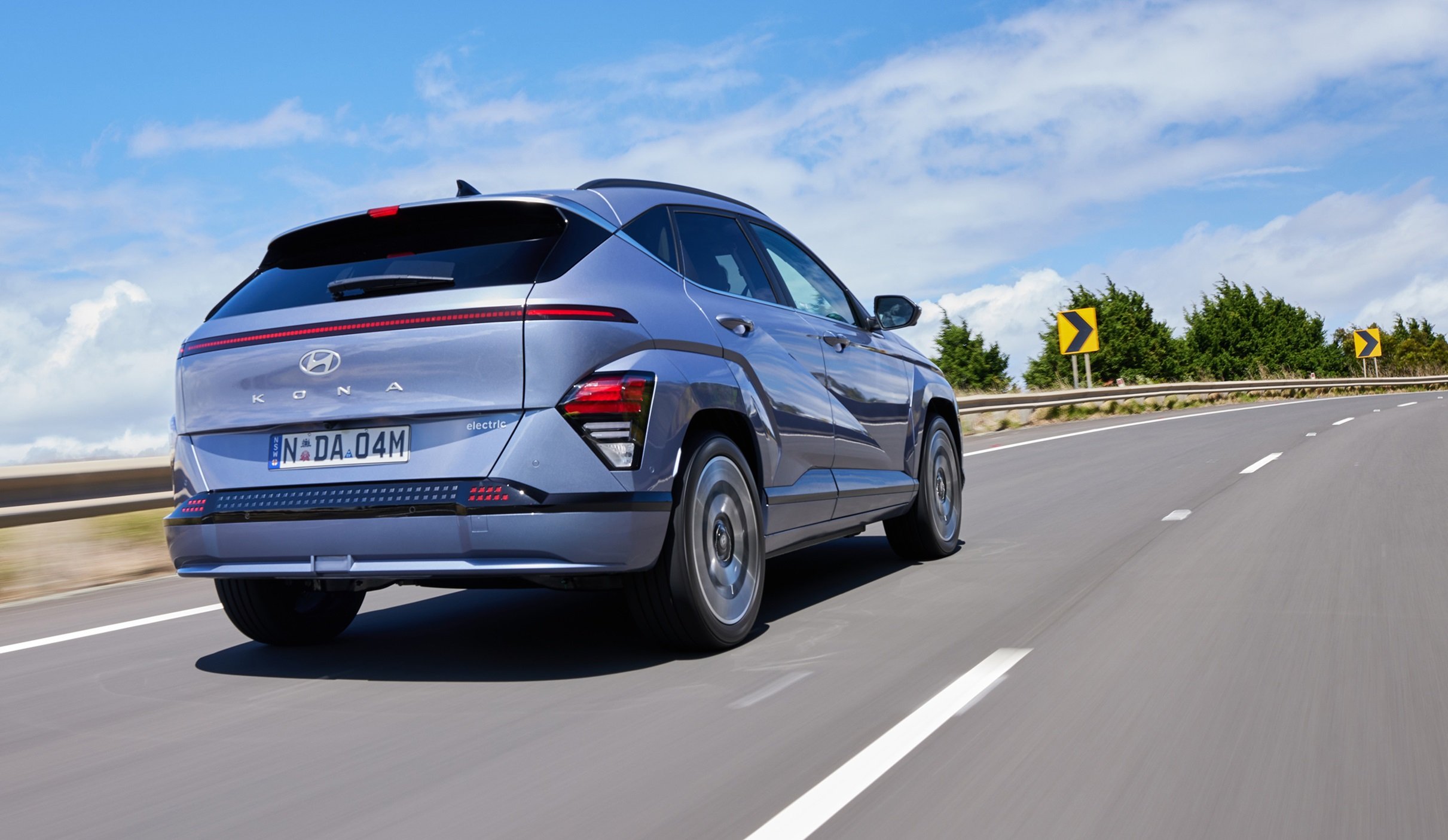
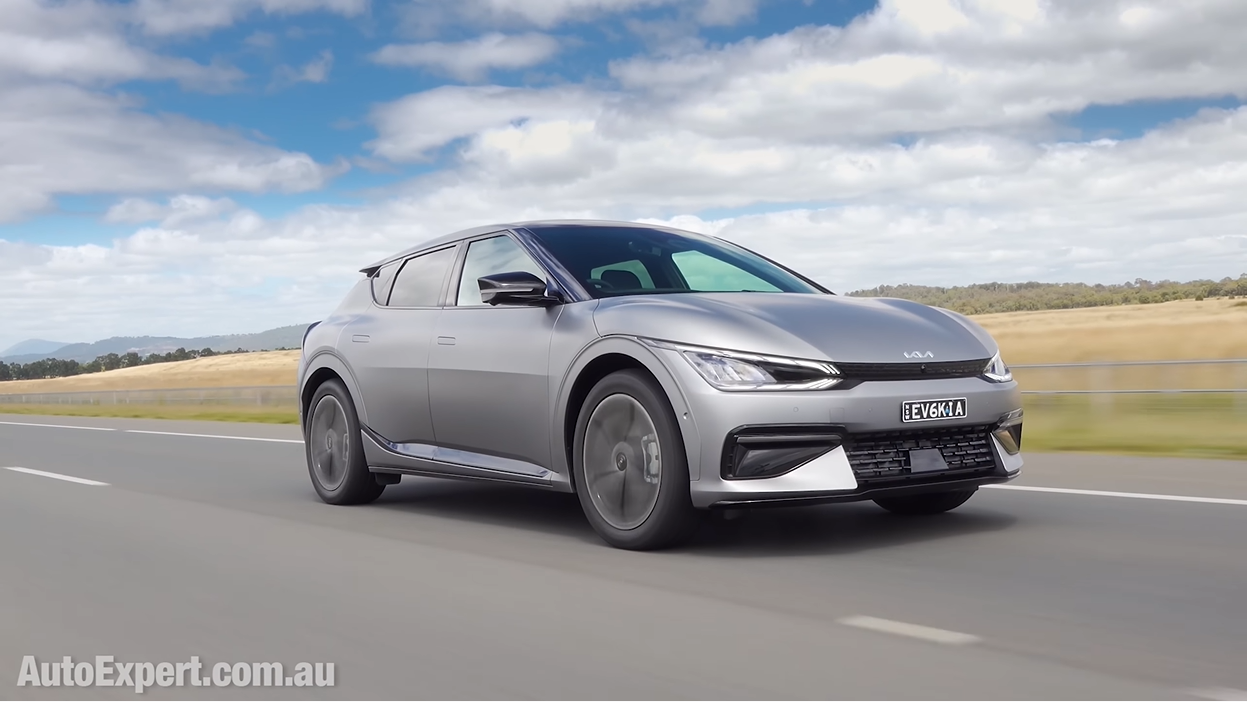
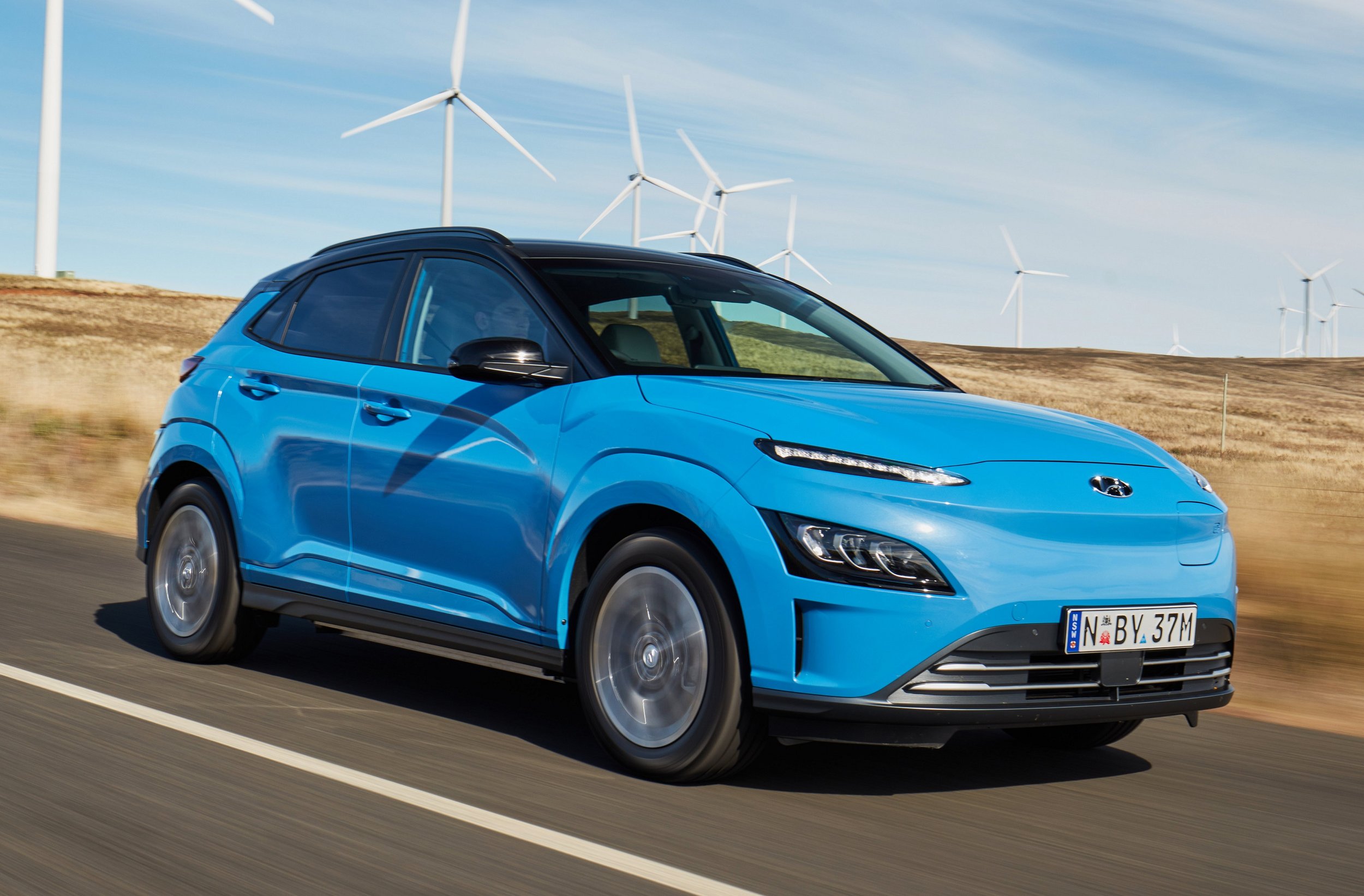
EVs regeneratively brake - just like hybrids. When you’re not powering on - like, when you’re coasting - the electric powertrain becomes a generator and pumps fat electrons back into the battery, thereby reclaiming kinetic energy that would otherwise be lost to the environment in a conventional car. Which is a pretty clever thermodynamics hack.
But how an electric vehicle feels to drive is also different. There’s a fundamental difference in the way they accelerate, go around corners and stop. The change in how their mass moves through time and space (compared with combustion vehicles especially) is noticeable - if you’re paying attention.
HANDLING
Handling is such a broad topic. But EVs tend to handle, not necessarily better or worse, but differently to the cars you’re probably used to driving, particularly if you’re new to EVs.
You could A) be talking about mundane real-world driving (like in a big fat Kia Sorento 7-seat SUV), or B) you could be talking about on-the-limit handling on, say, a racetrack with a really fast car (like the Hyundai i30 Fastback N).
In normal driving, you’re talking about how it feels around corners at normal speeds.
But in performance driving, you’re talking about how the vehicle behaves at- or close-to the limits of handling - and then how it handles when you go beyond the limit. In this report, we’re (generally) talking about the latter. But we’ll also touch on the daily driving you’re likely to do in an EV in regular traffic conditions.
In order to do that, let’s address some of the key factors relating to EV handling, starting with…
FRICTION
Pushing an object across the floor requires a certain amount of energy: It’s hard because of friction. Once it’s moving, it requires slightly less energy, because the coefficient of friction is less.
This level of friction can also vary depending on the materials themselves. So an EV, like a combustion car, will use more energy getting itself going from standstill than when it’s already moving.
Nothing particularly new here, except that the nature of EVs generally being about 25 per cent heavier than the equivalent comparable combustion vehicle means there is naturally more weight pushing down on the tyres, meaning there is going to be more friction between the tyres and the road surface.
The caveat here is that some carmakers will fit skinnier tyres to their EVs in order to reduce rolling resistance, to get better range out of the vehicle’s battery. So wider tyres would help the overall handling of the vehicle, except you’re limited to things like wheel profile, the amount of space in the wheelarch, the size of the brakes and those wheels fitting over the brake rotors etc. You’re also probably not inclined to go modifying the vehicle because that can void your warranty.
So, how come wider tyres grip the road better?
GRIP
Wider tyres are definitely better, which is why performance cars get them, because clearly area matters.
Grip is not just about friction. Tyres function because of an interlocking of the rubber tread blocks with the surface of the road. The weight of the vehicle pushes down on the tyre and makes it conform to the bitumen. That’s grip.
If you have enough mass of vehicle and the tyre width is sufficiently soft, then you’ll make more rubber interlock with the road - therefore you have more grip.
The softer the tyre, the more grip you have because you have a greater area of rubber interlocking with the road and therefore more friction. However, it will mean those tyres wear quicker - nothing is free.
ECO TYRES
Eco tyres are one of the limiting factors to the way electric vehicles grip the road. They’re viewed by the carmaker as an easy variable to improve range (because range is what sells).
They do this by reducing rolling resistance, by limiting the softness of the rubber compound and offering a more narrow contact patch, thereby offering less rubber interlocking; less friction; less grip. They do the same thing on small cars and hybrids and small SUVs to sell you on fuel economy.
Tyres are designed to suffer absolute hell. They contain large amounts of silica to reduce rolling resistance and then reduce the amount of energy in the battery needed to drive the vehicle forward. Unfortunately, grip takes a hit by doing this, meaning in an emergency driving situation like swerving, for example, you get to the grip limit sooner than a regular tyre with greater rolling resistance.
This isn’t the only engineering compromise on EVs, of course. But it is one of the easiest to solve by simply putting a new set of tyres on that aren’t in that eco category and offer a softer compound. The best way to keep your range as high as possible is to maintain optimal tyre pressures.
One option could be to keep the original set of eco tyres for summer, when the roads are generally gripper and it rains less often, and switch to your softer, grippier tyres during winter for when it’s cold and wet.
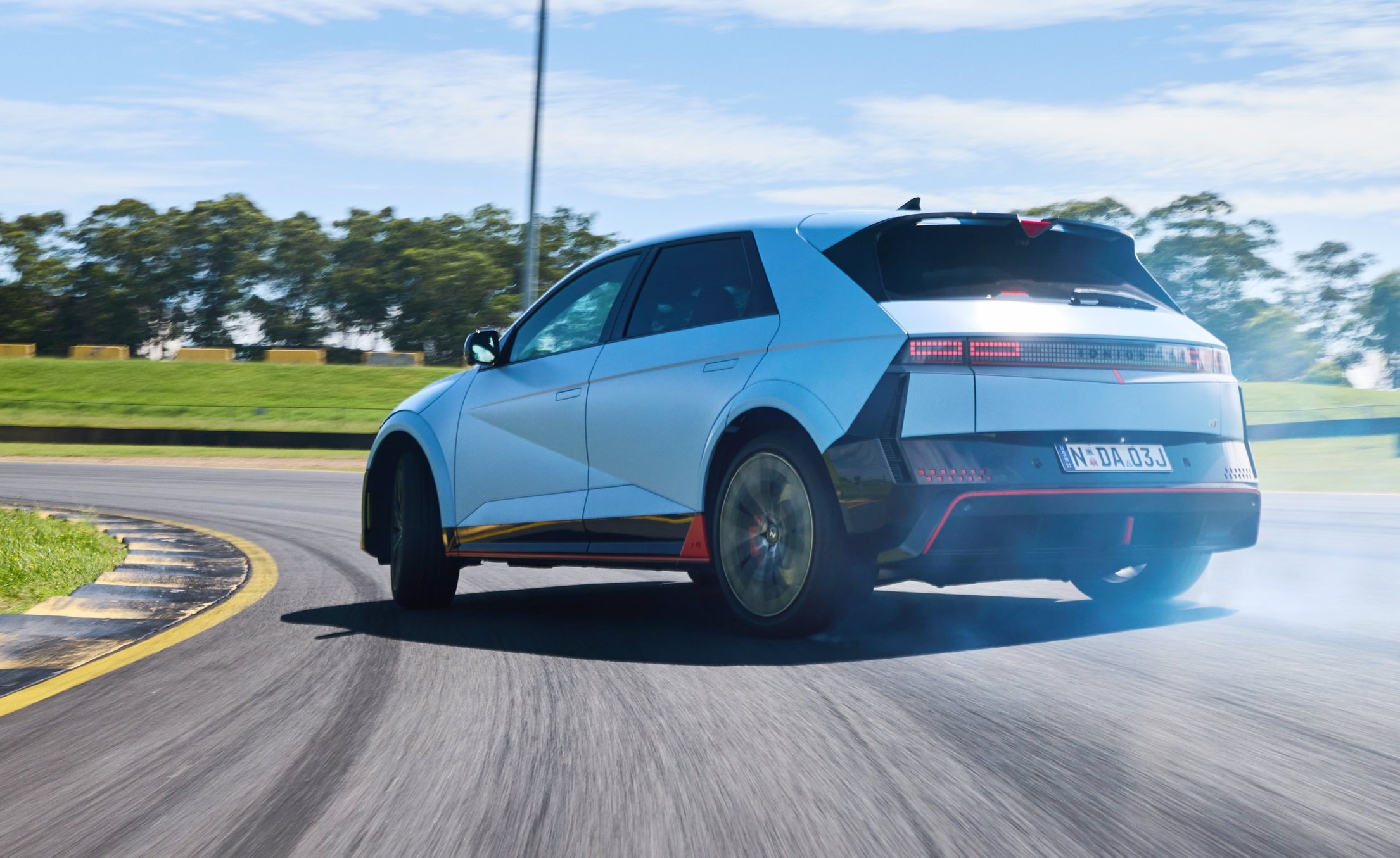
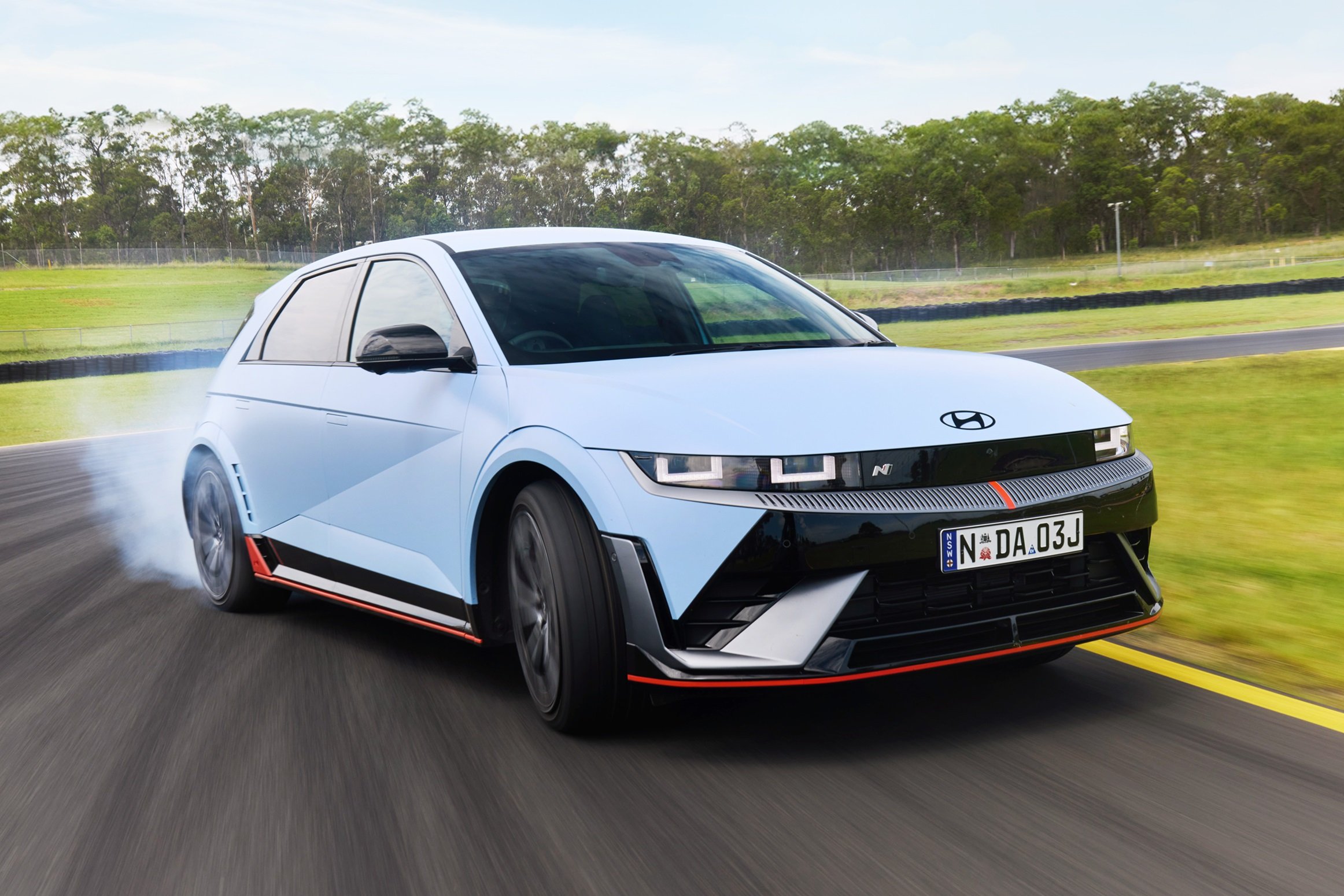
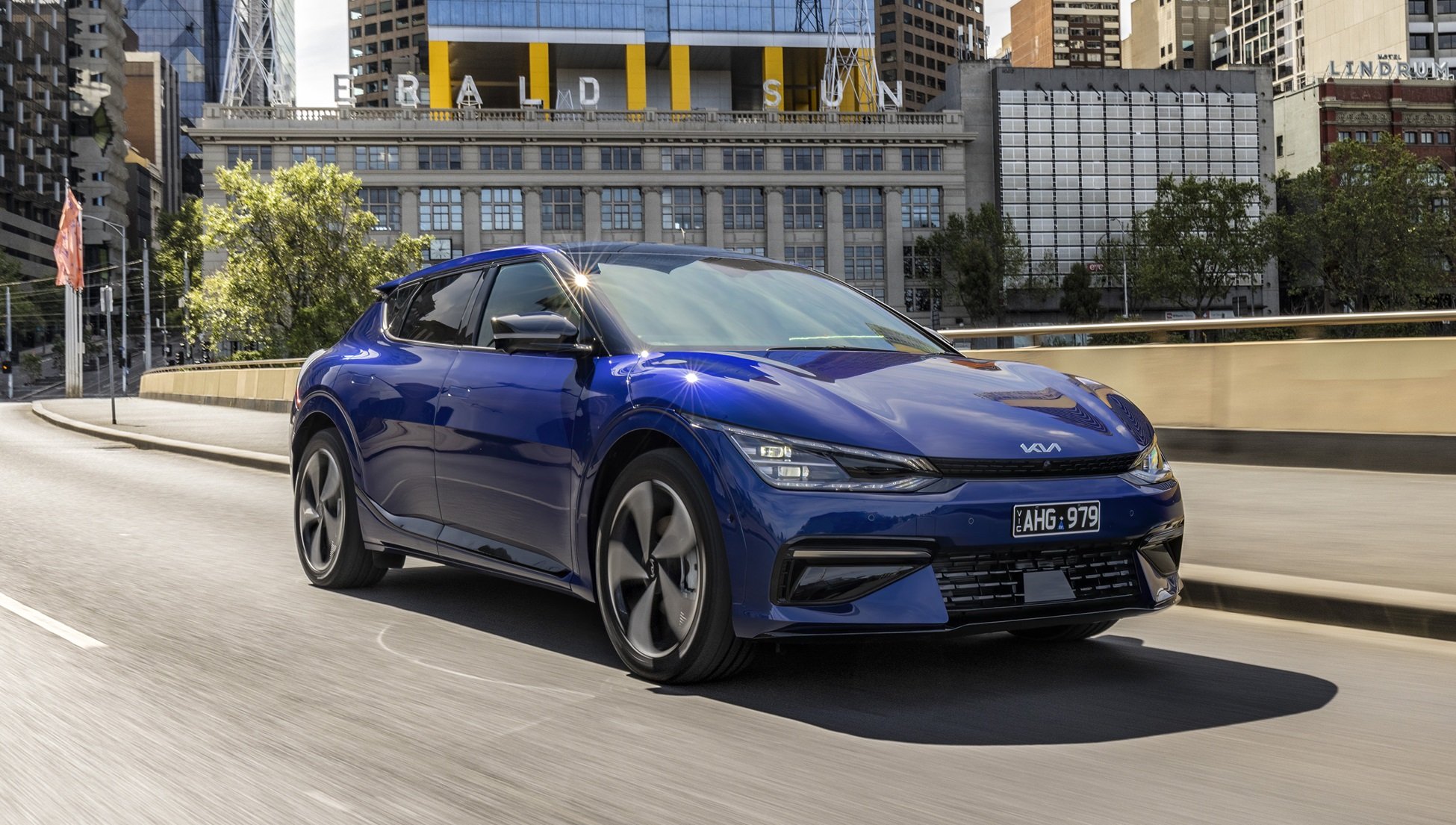
YAW
So, yaw is engineering terminology for turning corners, effectively. When you turn the steering wheel to go around a corner, you’re telling the vehicle to yaw. Now, as a how do you make an EV yaw if you’re a vehicle manufacturer?
The easiest, cheapest option is to start with a platform you already have (generally designed for a combustion engine and transmission), and then you modify the suspension and so on so it drives okay.
But to do that, in the case of the old internal combustion Kona versus the electric version, there was about 250kg of engine at the front, and replacing it with a 400kg battery and motor behind the mass centroid.
Therefore, you were more likely to oversteer and go rear-first off the road in the old Kona EV versus understeering and going off the road front-first in the event of a crash. This was because the additional rear-mounted mass of the battery increased the vehicle’s yaw response - it naturally wanted to rotate rear-first because the dynamic stability has been dramatically altered.
This is generally the case for EVs derived from internal combustion platforms. So, as a consumer, you might be intersted to know that carmakers that build their first iterations of EVs would usually try to deploy countermeasures like changing the electronic stability control, but that was more of a band-aid solution.
So, in the wrong bend, with negative camber, with too much lock, dramatic lift-off regenerative braking, with the rear wheels unloaded, it’s going to be tail-happy and could mean disaster if you’re not ready for it.
Having said that, it’s not some under normal driving, being conservative and sensible in all conditions, it’s extremely unlike you’d ever have such a problem. And with the latest generation of EVs mostly being built as dedicated platforms to begin with (and in the case of a Kona EV today is adapted back to suit combustion powertrains), so they don’t have this issue.
MODAL SEPARATION
Here’s where the beer garden physics get properly gruesome. Better get the gauze.
Let’s introduce another factor here called roll-centre. Essentially, roll-centre is the point in the vehicle where it rotates vertically side-to-side, like when you turn a right-hand corner the vehicle rolls to the left - and vice versa.
So by removing the 250kg petrol engine and adding the 400kg battery on the floor, essentially the vehicle’s roll centre has been lowered - and that’s what you’re feeling when you drive your EV and think, ‘Oh, that feels different’.
ICE Kona is going to roll more than electric Kona (which is why electric Kona feels nice at normal speeds), but at the limit, ICE Kona is going to handle much better.
Now, modal separation is where it gets truly brain-bending.
We’ve got roll mode, where the vehicle rotates through the roll-centre.
Then you’ve got bouncy mode. Both modes are controlled through the suspension: springs, dampers, bushes. When designing the EV, you have to figure out how to design the suspension to account for both roll mode and bouncy mode.
This is harder to do with a platform already designed for an internal combustion engine, based on its mass and where that weight is built into the design.
WHY EVs HANDLE DIFFERENTLY
Electric vehicles handle differently because they’re grip limited because of tyres, they’re tail happy and have more exaggerated countermeasures to offset that behaviour - generally speaking.
They also have a compromised relationship between centre of mass and roll-centre.
So, the newer generation of purpose-built EV platforms, do a better job of mitigating these design deficiencies, and as this continues, it should be very exciting to drive at the limit. New models like the Ioniq 5 N are the perfect example of this. (See the ‘Performance’ chapter below for more on this.)
Ioniq 5 N is roughly as fast as an Audi RS6 but also $150,000 bucks cheaper, and doubtless more reliable - especially on a racetrack.
First though, here's some context (ie what you need to know) about this amazing car before watching the full-length interview below. Most people hear the word ‘ridiculous’ and think it’s a negative description, but au contraire. The Ioniq 5 N makes almost half a megawatt of power and that is frankly ridiculous but it's also very difficult to have any kind of problem with a car that offers that, irrespective of its powertrain.
It weighs as much, roughly, as a dual-cab 4X4 ute, but paradoxically, it manages to change direction like freaking Baryshnikov, and it offers astonishing racetrack endurance, which was thoroughly teste. This EV kicks ICE ARSE. Basically, there's no other conclusion and unlike most cars with that much poke, it doesn't actually try to murder you at every turn.
If you want that, you'll probably still have to buy a Lamborghini. I tried but, alas, failed to kill an IONIQ 5 N across consecutive fast laps (fast for me, anyway) of Sydney Motorsport Park nee Eastern Creek.
Despite my heavy-handed abuse the Ioniq 5 N failed to catch fire or otherwise die, so you'll probably still need a Tesla if you want that. Or possibly a Lamborghini.
PERFORMANCE
There are two definitive performance electric vehicles on the market in Australia now. One is the Porsche Taycan, which still uses the word ‘Turbo’ on the back in, what can only be likened to the kind of hubris one might describe as typical of the Volkswagen Group.
The other red-hot EV in Australia is the Hyundai Ioniq 5 N. You might consider the Kia EV6 as a performance EV contender and you would be right, to a certain extent, except that vehicle is (arguably) closer to a sports or GT car. It serves two roles - a multi-role electric vehicle, if you will.
But the Ioniq 5 N is an outright nutcase:
LIMITATIONS
Electric vehicles offer immediate (and in some cases) maximum torque from virtually zero ‘revs’ or from a standstill. If you’re in a Top Fuel dragster doing quarter-mile times, that’s excellent.
But if you’re, say, on a low-traction surface or in some kind of alternate driving condition such as mud, soggy grass, snow or a steep incline, maximum torque is not necessarily what you want.
There does seem to be a commonality among many EV owners that these vehicles are simply electric versions of their exact petrol or diesel counterparts, that they are identical in their modes of operation and their modes of failure are also the same.
However, electric vehicles do have their limitations in some areas of driving where regular combustion vehicles do not - and this is neither propping up combustion vehicles nor demeaning EVs. This is simply helping you to understand how and where an EV is appropriate or might come up second-best.
Perfect example: the snow. A simple day-trip up to your local, free and public snow-covered national park, where the single-lane road in and out can easily become icy or snowy for several kilometres before reaching the designated carpark, can prove difficult in an EV.


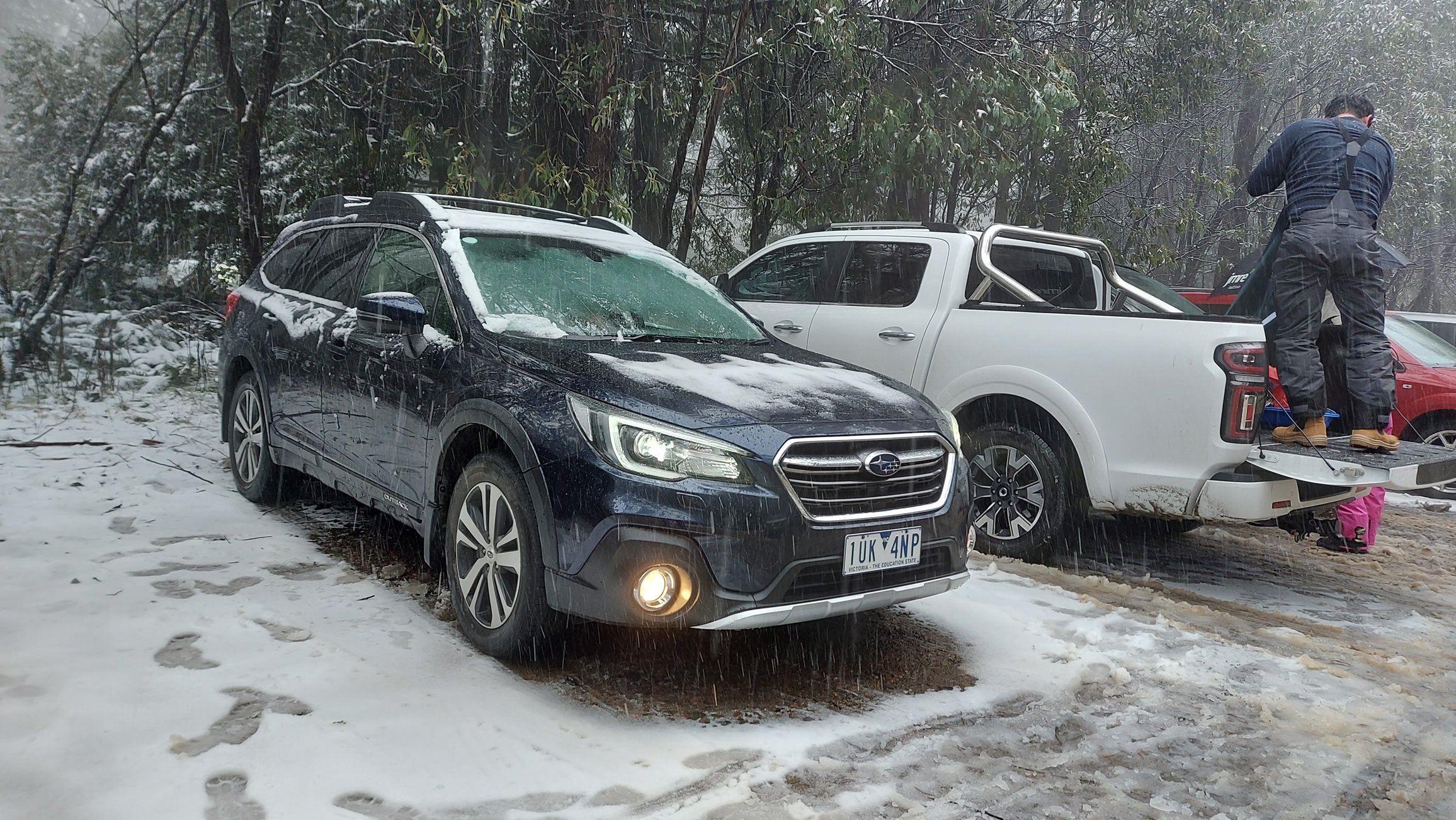
As for normal daily driving, EVs are great. They’re smooth at regular suburban speeds, they get plenty of opportunity to regeneratively brake and recover some of that precious kinetic energy, and they are remarkably quiet.
Most of the criticism for noisiness (what motoring journalists might refer to as ‘NVH’, which stands for noise, vibration and harshness in the game) is usually directed at the driving aspects you never notice in a combustion vehicle such as wind resistance and tyre roar.
The notionally worst wind resistance is around the door mirrors, because that’s where the most turbulence occurs, and at the base of the windscreen where the air changes direction rapidly.
The worst of the tyre roar is typically at 80-100km/h speeds, and again, this is generally only noticed (same as the wind noise) because you don’t have a combustion engine vibrating and rumbling up ahead of you just behind the firewall, and the gearbox doing things in the transmission tunnel underneath your left elbow.
Driving an EV in regular traffic has some distinct advantages over combustion.
REGENERATIVE BRAKING
Regenerative, braking, if you are unaware, is the capturing of kinetic energy, that would normally be lost via braking, during deceleration. Capturing this energy is done by the vehicle being at-speed and either hitting the brakes, or coasting (off-throttle) whereby the motor in the drivetrain becomes a generator by spinning in reverse, which trickles energy back into the battery.
By the laws of physics, you cannot put more energy back into the battery using this method than what you’ve used to get the vehicle moving. But it is a very good way of reducing how much energy you would normally waste in a combustion vehicle. In terms of efficiency, this is a win for electric vehicles - and you.
The best kind of driving situations for this particular system is stop-start commuter traffic where you get up to speed and then recoup some - note: some - of that kinetic energy as you slow down for the next set of traffic lights.
You generally get a ‘regenerative braking/energy flow’ indicator on most EVs, in some form, telling you how much is going back into the battery. And just in case the carmaker thinks you’re too dumb to figure out which way the electrons are flowing in particular driving situations, there are often graphics and arrows telling you what’s happening in terms of energy input/output.
What you’ll love about the brakes, specifically, is how often you don’t need to touch them. Regenerative brakes do a lot of the work. EVs don’t have multi-ratio gearboxes, either - because the motors are so flexible. So that’s nice.
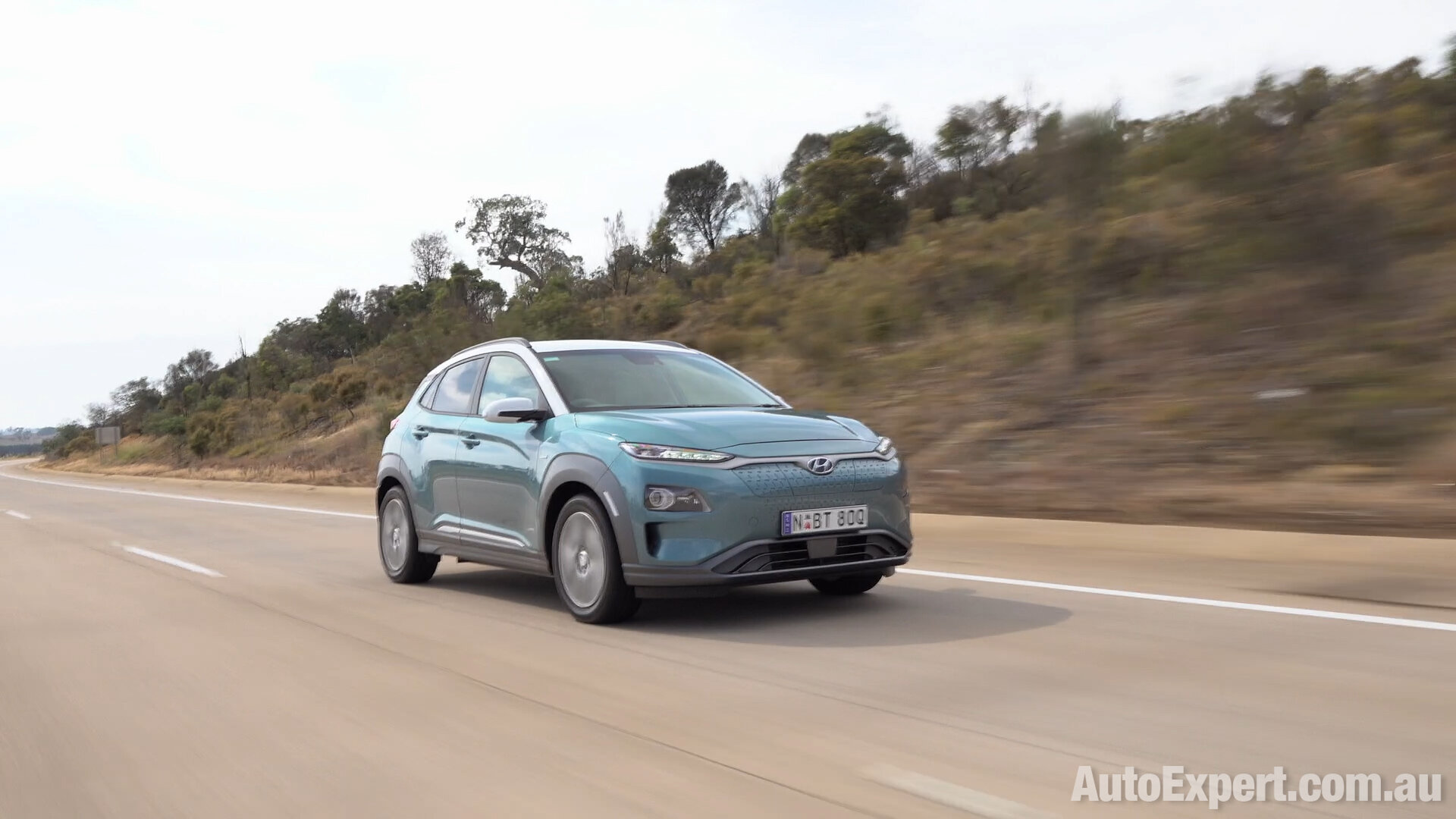
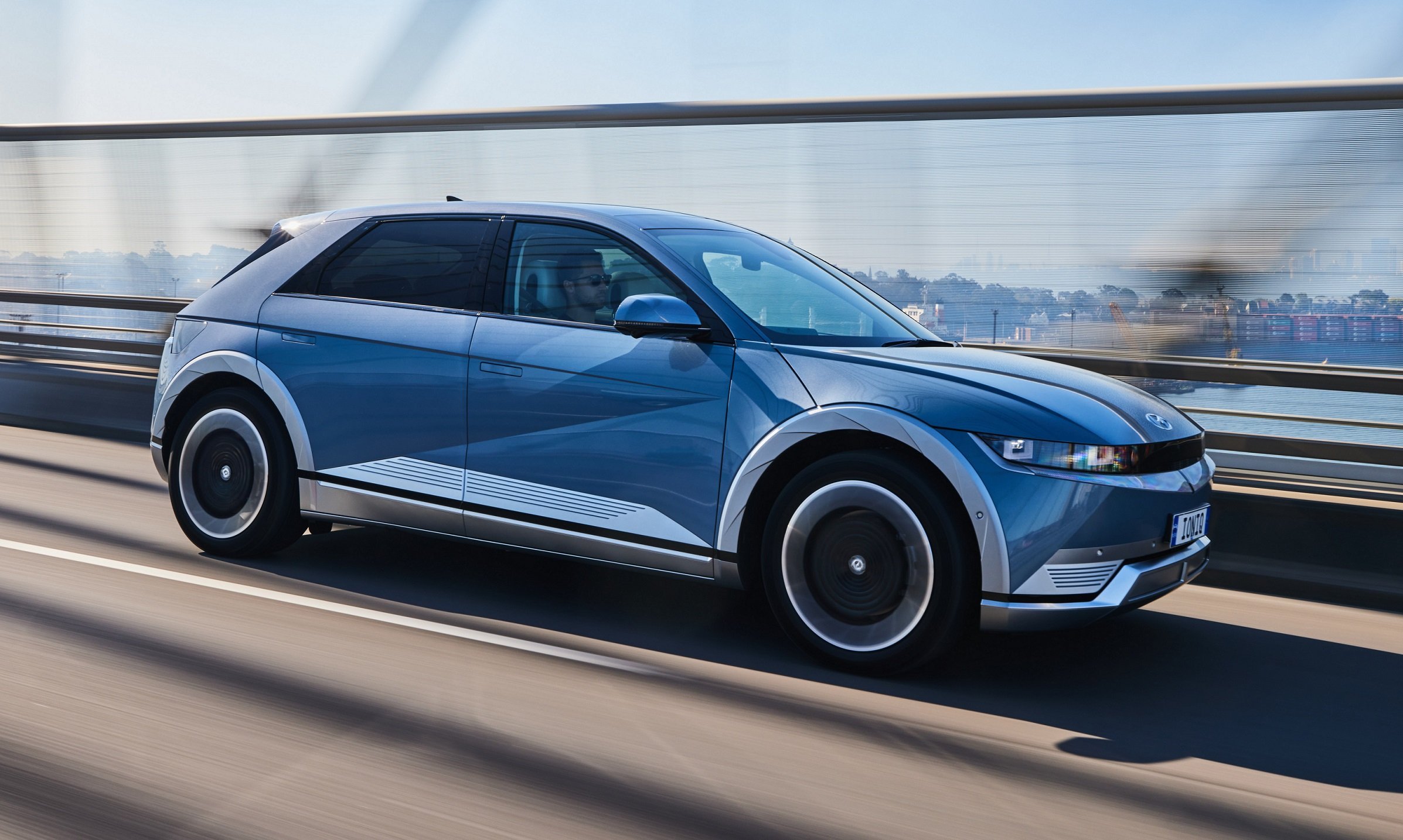
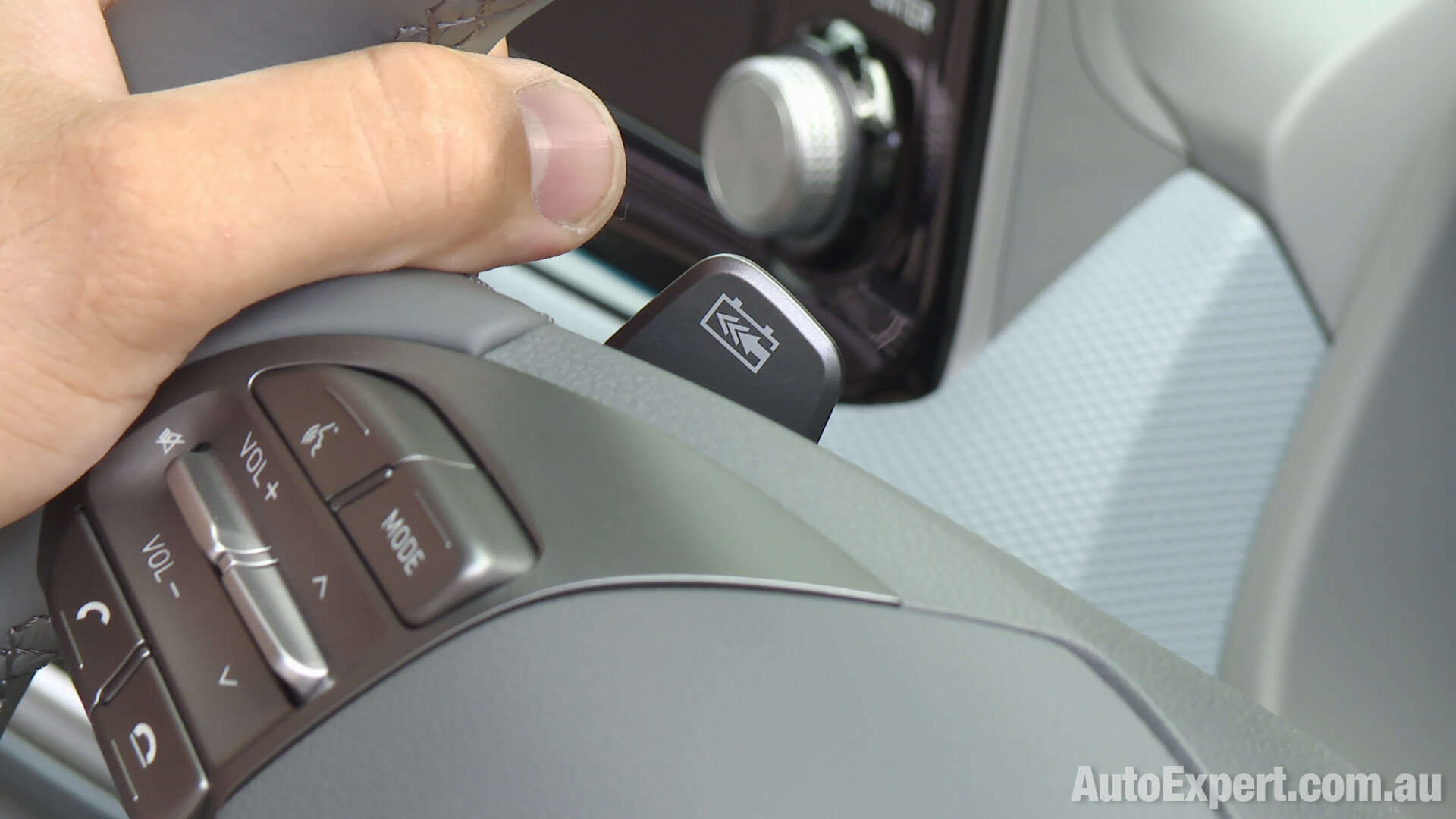
But there are still paddles behind the wheel, and they’re not for changing gear. They’re for the regenerative brakes, which have three levels of engagement - four, if you count ‘off’.
One really cool feature is pressing and holding the left paddle, which will drag in maximum regen, and ultimately bring the car to a complete halt. You really don’t need to touch the brakes very often, and the more you use the regen, the greater the range becomes. And (of course) the less frequently you’ll need to change the brake pads.
RANGE
Speaking of range, most EVs can drive about 400-450 kays on a single charge, in the real world. That’s properly useful. Take that, five-year-old Nissan Leaf...
The battery in the Kona has sophisticated active, liquid cooling, which some competing EVs, like the Leaf, do not - so long-term reliability of the car’s largest and most expensive component is relatively protected. Plus there’s an eight-year warranty on the battery for peace of mind.
Kona EV has a comparatively big battery, too - 64 kilowatt-hours - versus the Nissan Leaf with 40, for example. Which explains the Leaf’s proportionally lower range.
64 kilowatt-hours is a lot of electrical energy. Energy is, like, what gets you from A to B. (Physics 101: More energy gets you further. More power gets you there faster.)
But before you go crowning Kona EV defacto ‘King of the Juice’, a 55-litre petrol tank holds roughly eight times more energy, and weighs 90 per cent less, and you can ‘recharge’ a petrol tank (and pay) in under five minutes.
So if that refuelling ritual really is going to need a eulogy some time soon, we really need to talk about recharging. (That’s coming up…)
You will learn not to worry about range or recharging - especially if you have off-street parking. Think of your actual personal mobility requirements. It’s rare for most people to drive more than 430kms in a day, and that’s what most EVs deliver, fully charged these days.
Generally speaking, the onboard range estimation algorithm on most EVs is dead accurate, too, so you can trust it.
If you have a driveway and a carport, a single-phase 32-amp charger installed is a smart decision in terms of practicality (as well as adding value to your home.
It’s weather-proof, and many of them will recharge your EV at its maximum 7.7kW AC recharging rating in about eight or nine hours (depending on the size of the battery, obviously). So if you come home dead flat, you usually just sleep on it, and you’re fully charged again in the morning, using the cheapest electricity tariffs (the overnight ones).
If you have a Kia EV9 or Polestar 3 however, with their gargantuan 99kWh and 111kWh batteries, they are going to take about 30-40 per cent longer to charge. Closer to 9-10 hours on the home charger overnight to reach full capacity.
A three-phase charger - three-phase power - would not be an asset in this situation. And even without a solar array on the roof these are dirt-cheap vehicles to run. At roughly 26 cents per kilowatt-hour, a full charge costs about $17. So it’s about $3.70 for 100 kms of mobility, versus (ballpark) $12 for internal combustion.
Provided you’ve got off-street parking and you live in a city - operating an EV is mainly super-convenient. It’s just one more thing to remember to recharge, right? Like phone, laptop, tablet, camera, car - check.
CHARGING (and range)
For most recharging situations, with the majority of EVs now offering 300-500 kilometres of range, even if the vehicle’s telling you the battery is about two-thirds depleted - you’ve still got about 150 kilometres of remaining range.
Even at this state of depletion, the range is beyond adequate for most commuter driving duties the following day. You really don’t need to be concerned with range anxiety - not if you actually think about the distances you’re driving (and that little bit of kinetic energy you’re going to be recovering at every set of lights you have to stop for). So that’s reassuring.
But the recharging time - on the 10-amp wall plug outlet which is more like a trickle charger - is still a bit of a pain, at more than a day for a mid-range sized battery like the one in a Kona that takes 26 hours and 20 minutes. That is a long time. 2.1 kilowatts is of course more than adequate to run most household appliances, but in the context of providing tractive effort for almost two tonnes of car and cargo, it really is just a trickle.
And we’ve still got about one-third of ‘juice’ left in the battery at 150km of range. Extrapolating that up on a properly flat battery, it’s gunna take about 35, 40 hours to pump in a full charge. And there’s going to be times when that’s not going to work. You know - when you get home late, battery depleted, and you forget to plug in, or perhaps you just have to leave extra early in the morning for whatever reason.
Having said that, keeping in mind the realistic distance you’re actually going to be travelling, you might still have enough trickled back into the battery to do the day’s driving.
But with a fast charger in place, 7.2 kilowatts of recharging power slashes 19 hours from the process. You can literally sleep it off - and lunch off that comparatively cheap overnight electricity, and the battery is gunna full enough again, in the morning, in eight or nine hours even if you arrive home really flat. This fast charger is from JetCharge >>
So this really is a win for practicality; utility; usefulness - whatever. So, let’s talk about reality and why you might choose to remain in touch with it.
Every 1000 kilometres in a Kona Electric, for example, is going to cost you about 36 bucks in electricity in Australia. Most people drive about 15,000 kilometres a year, according to AusStats. So that's about $540 on your annual electricity bill - a lot less than driving an equivalent petrol vehicle.
Of course, the Kona Electric is about $25,000 more expensive than the equivalent 1.6 turbo petrol Kona, so it's pretty hard to make any case for economic rationalism.
At 26 cents per kilowatt-hour, that’s pretty reasonable for prime time electricity in Australia. It's going to cost a bit more in South Australia, a bit less in Queensland and Victoria, but yeah that's about $16 per full charge from dead flat. That's about 3.6 cents per kilometre, so about the same as a cup of coffee for driving 100 kilometres.
For most owners, recharging just happens in the background while your eyelids are shut and you’re dreaming. If you drive about 10,000 kilometres every year (below the 15,000 average) for example, and if you’re typically recharging at about 25 per cent capacity, this is going to result in roughly 30 recharge events in a year, for something like a Kona Electric.
If you did those notional 30 recharges per year, that means about one recharge every 12 days, on average. That is hardly going to become tedious or some kind of ‘daily grind’.
If you drive that 15,000km national average, it'll be about 45 recharges. So, maybe once a week. Not exactly arduous.
CHARGING SAFETY
This bit isn’t supposed to scare you, it’s about making you aware of the situation relating to EV battery fires and how they differ from combustion-vehicle fires, and your personal safety in the unlikely event things go wrong.
Unfortunately, the nature of these vehicles being in the mainstream for such a short period of time, compared with combustion vehicles, is that our regulators and safety authorities haven’t got the safety messages and the infrastructure-type countermeasures in place to deal with EV battery fires.
It’s the nature of the beast when there is a technological shift in the market and regulators are historically slow to keep up with those changes when it comes to implementing solutions to the problems these changes create.
The battery in your notional EV is an energy storage device, just like the fuel tank in your mum’s old Corolla. But there have been decades worth of safety protocols and fire fighting techniques and catastrophic learning opportunities when it comes to the systems of combustion vehicle transport we see around us today.
Remember when it was near-enough to a terrorist act to be caught using your phone while refilling your petrol tank at the bowser? Nowadays, it’s perfectly okay.
Knowing where to instal your home charger, what the possible implications are if you recharge inside your garage with the doors shut, and what to do in the unlikely event of a fire, these are important in the same way we know to not smoke a cigarette while refuelling your combustion vehicle.
Opening windows and doors while painting, wearing full PPE when handling asbestos and installing a full-height pool fence are the same systematic safety precautions we take elsewhere in the modern world.
Avoiding an EV-related fire, and knowing how to minimise the risks in the unlikely event of one, is equally crucial. We’re only talking about it in the context of buying an EV today because it doesn’t enter the mainstream conversation otherwise.
HOME CHARGING
OWNERSHIP
Look, if you do the Jet Charge thing, overnight, even using the filthiest coal-fired grid in Australia, you’re really just consuming baseload power. They’re going to burn that coal anyway, for the foreseeable future, whether you charge up or not, just to keep the grid active. In other words, they’re not burning additional coal to charge your EV, overnight.
So keep that in mind when people try to demonise you and your EV as sucking from the goal-grid’s teat.
...but of course if we all drove EVs tomorrow, they would have to up the baseload burn. So, transitioning to a greener grid is not exactly optional in the medium term. And solar is great, but the sun doesn’t shine overnight, problematically.
If you buy an EV today, you might not be saving the planet - probably not, in fact - but you are absolutely contributing to cleaner air in our cities, and you are taking some of the energy security burden away from our nation. Meaning: Away from useless politicians who mismanage this vital security issue and let you down so badly, every day, in the background. These are big issues - for human health, and national security, respectively.
And on that last point - if 2020 taught you anything, please let it be that our security can be threatened in unexpected ways, rapidly. We spent all this money on counter-terrorism, equipped the cops with assault rifles to deal with a non-existent threats, after 2001 air travel changed forever, we all have supercomputers in our pockets, and we benefit from the greatest medical technology the human race has ever known.
Yet we had our pants pulled down by a novel coronavirus. Well done, elected representatives.
Australia has two weeks of liquid fuel supply. If the tap runs dry, like perhaps the Suez Canal becomes untenable or the shipping routes in the South China Sea become insecure, Australian society is in trouble. It’s quite serious.
Therefore, you can kick a significant, tangible, practical goal in these areas if you buy an EV today. These benefits exist ontologically - they’re in the domain of ‘facts’. Meaning, you don’t have to be some green nutcase to defend your decisions around them.
This is not suggesting that everyone who buys an EV is a nutcase. Just the ones who think they’re saving the planet. Or that liquid fuel is on the brink of death. Look around, dudes...
If you want to make a rationally defensible case to own an electric vehicle, that’s pretty much it. Clean air. Energy security. A Kona Electric, for example, is going to cost you many thousands more than an internal combustion SUV - but it is a defensible choice.
And, of course, most EVs go like stink off the mark, but not all of them, and not all of the time. Straight line performance is ridiculously good. Certainly in line with, or better than, many other cars at the same pricepoint. Like, when that clown in a WRX inevitably tries to carve you up at the lights? He may well discover that your small family-SUV Kona Electric is more fully sick than his fat Rex.
And, hypothetically, if someone I know had spent at months therapeutically blowing cars into the weeds such as that, with a $50K EV, at every opportunity, he would probably be able to tell you their owners really don’t like it when the faster car is electric.
But of course, we’ll never really know, because this is merely speculating.
Always drive responsibly. And just remember: Eco tyres are not that grippy in corners. Discretion: Better part of valour there. At least, initially.
Few cars at this pricepoint will match a Kona Electric from zero to about 60 kays an hour (that’s 35 miles per, America). So you can absolutely add ‘performance’ to the list of ontological ownership justifications. Meaning, there’s really three defensible reasons to buy this car.
IMPROVED AIR QUALITY
An actual virtue wrapped up in the operation of EVs is: reduced toxic pollution in our major population centres. This is huge. I’m not talking CO2 here - I’m talking unburned hydrocarbons, carcinogenic particles and oxides of nitrogen (which are ultimately respiratory irritants).
EVs do not emit that crap. This is unequivocally good - because ‘that crap’ kills more people prematurely than car crashes do. So you can feel unreservedly virtuous about this aspect of non-emissions in your EV - without pulverising the epistemology of reality.
All these governments making proclamations about EVs: they’re not saying anything about getting the most toxic vehicles off the roads, I note. These would be old trucks, many of which in Australia are allowed to operate without any pollution control whatsoever, in our cities. Not addressing this is absurd.
Instead, inner-city councils are denying applications for things like child care centres, for example, on major arterial roads … which, to me, is like prescribing paracetamol for a brain tumor.
PERFORMANCE
You might think ‘7.6 seconds 0-100 is mediocre at best’. Yeah - it is - it’s middle of the road. But I don’t do that in traffic very often. Cuz I don’t want to immolate my licence.
You do, like, 0-40, 0-50, in traffic. That’s pretty common. And in that context, the Kona Electric is a weapon: silent but deadly from 0-50.
Internal combustion is pretty compromised getting off the mark. It’s not something internal combustion does especially well. Just look at the engineering countermeasures in place to overcome this compromise.
Certainly the power-delivery characteristics of the internal combustion engine and powertrain are compromised, on fundamentals, and the driver needs to use considerable finesse to avoid the two venial drag-racing sins of bogging down, or over-cranking it and spinning the wheels.
TYRES
PERFORMANCE VS ECONOMY
By default, electric vehicles that are not designed for performance (i.e. essentially anything other than a Hyundai Ioniq 5 N and a Porsche Taycan), will come with eco tyres. Even if the carmaker brand wants to sell you on its alleged performance capabilities, they will, almost guaranteed, stick you with low-friction (low rolling resistance) tyres.
These are generally designed to maximise battery range rather than prioritise grippy mid-corner speed retention. That’s not to suggest eco tyres are in some way inherently deficient or even dangerous, they’re quite okay to drive on normal roads at normal speeds and under normal driving conditions.
But eco tyres suck if you’re a driving nut who likes to hold onto mid-corner speed and ‘clip the apex’ on your way through a twisty set of mountain roads - or something.
The Kona Electric, tested for over 10,000km back in 2020, was given a secret grippy goodness upgrade and the verdict was a happy one.
Such a huge difference was made to the underlying character. It was a tangible boost for driving dynamics in all conditions - and incredibly cost-effective, when you think about it. It cost just over one per cent of the price of the vehicle.
You’re looking at four of Michelin’s finest 225/50ZR17 Pilot Sport 4 asymmetric high-performance tyres - so hopefully we’re about to say ‘bye bye’ conservative eco tyres and ‘G’day, Spiderman grip’ - hopefully - then I’ll give it a few hundred kays behind the wheel and let you know the difference.

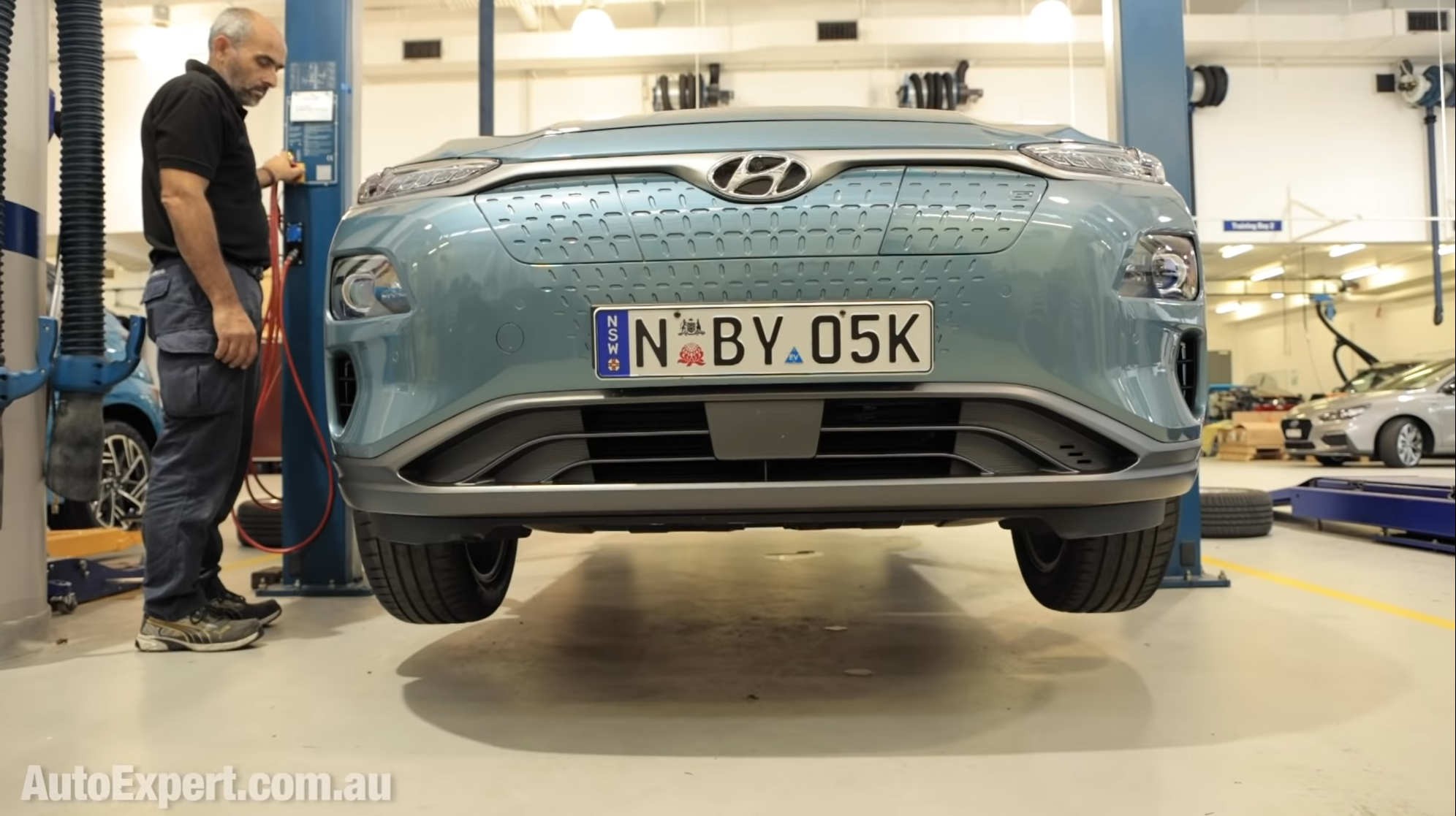
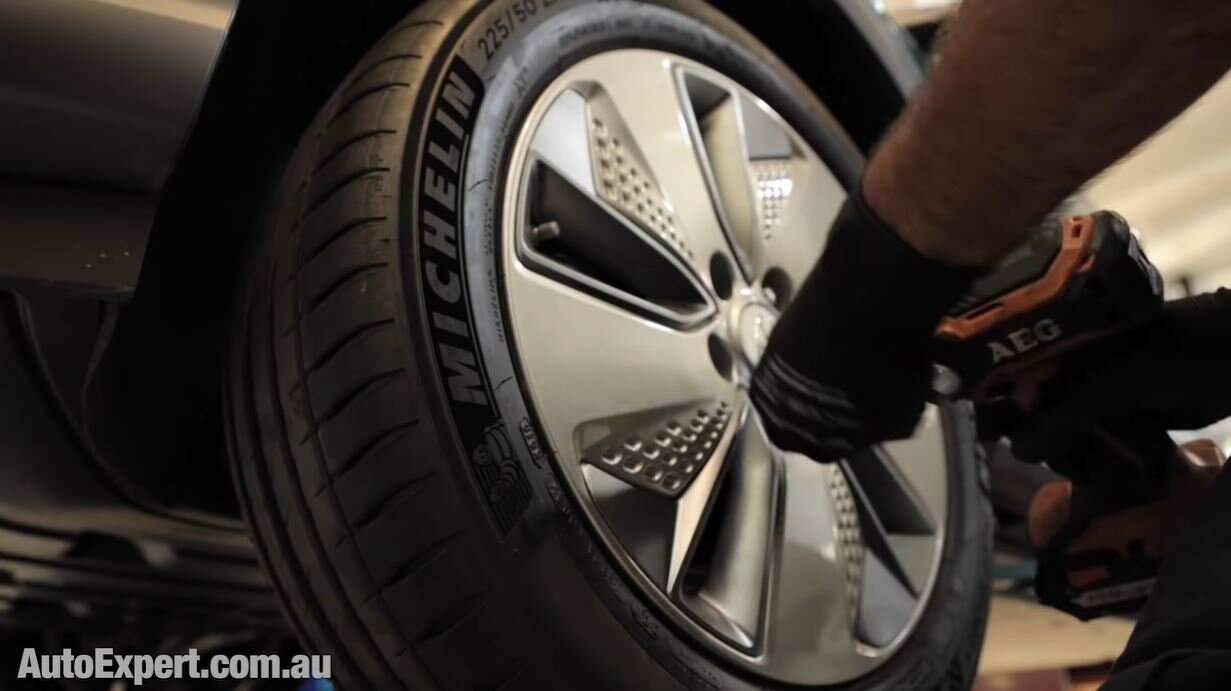
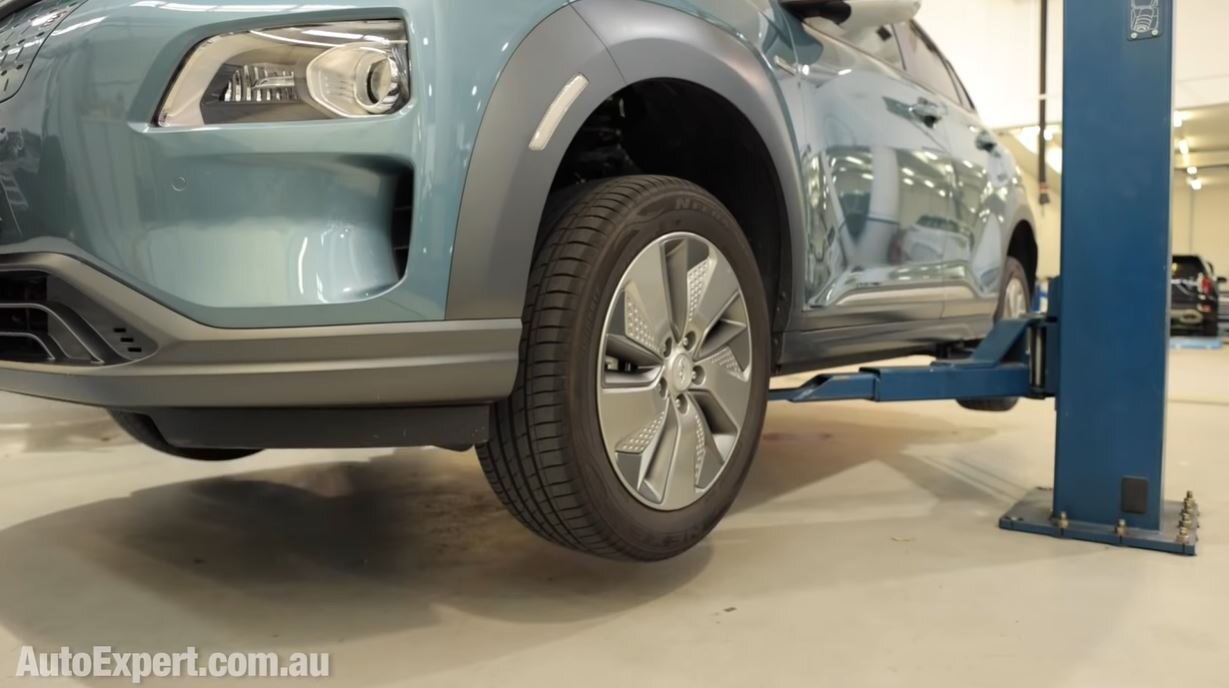
TREAD CAREFULLY
Tyres are actually the most cost-effective automotive performance modification of all time - because they bolt straight up, and they enhance acceleration, cornering and braking.
Show me the other mod which can do so much, for so little. All you need to bring to the party is skill.
So, 400kms down the track, split between the suburbs and the open road...
The biggest single difference is lateral grip. Which also means more roll too, which makes the electron-powered Kona feel more confident during assertive cornering.
It has a more progressive transition from grip to slip.
There’s better on-centre feel and positive return to centre out of a bend. You also get better high-speed stability - and stability transitioning the crown for overtaking.
Better - astoundingly better - in the wet. It’s a complete dynamics character change.
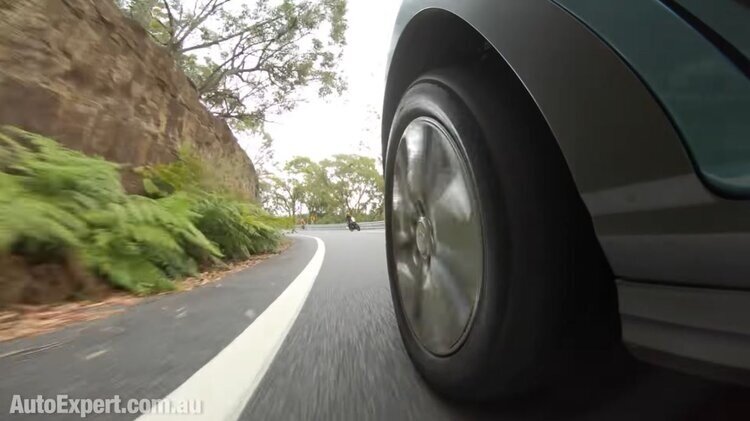
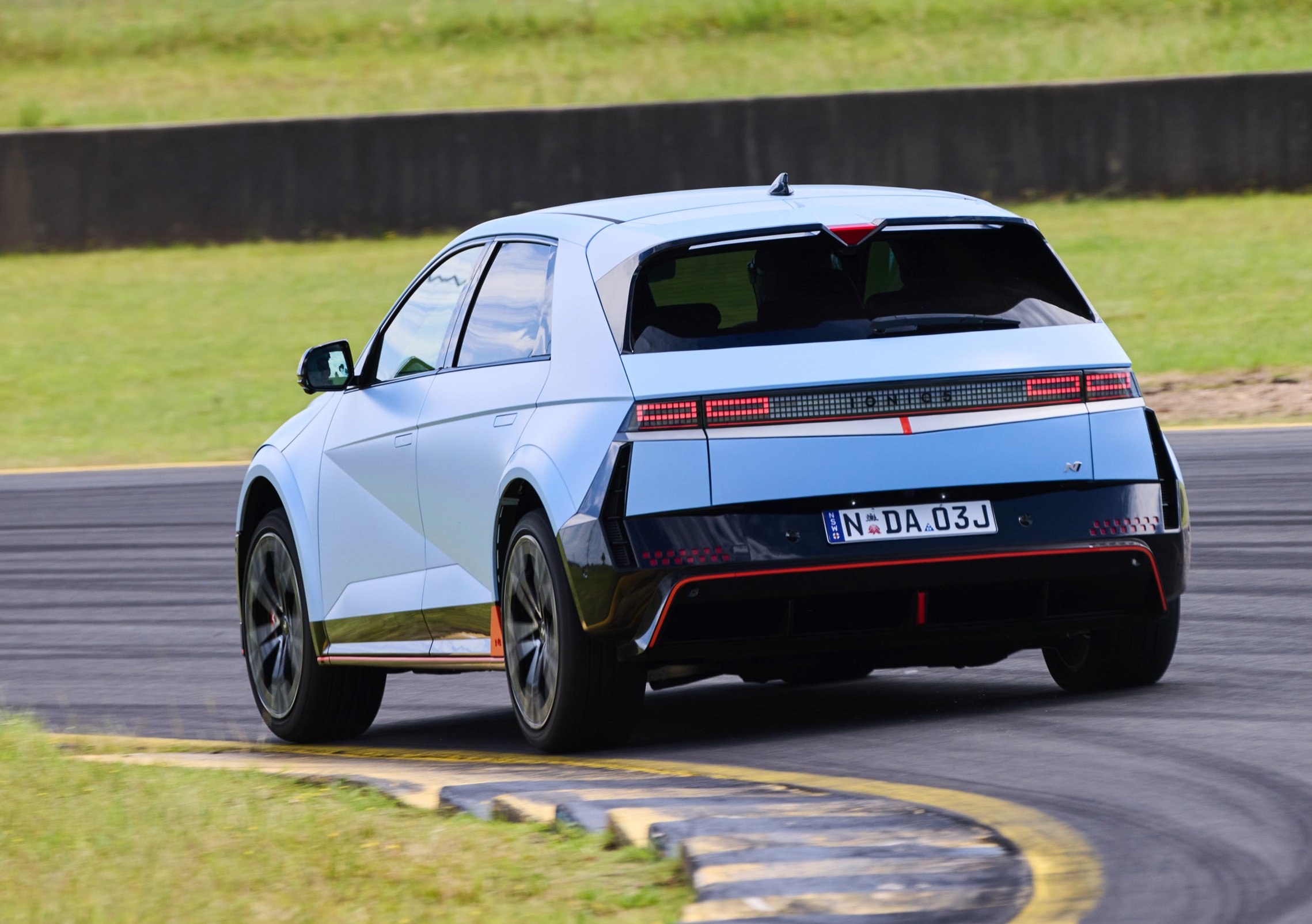
Tyres all look black and round, but there’s a vast difference between the crap ones and the good ones, and these Michelins are very good. There’s an amazing amount of tech - so here’s just a small insight…
Asymmetric: There’s an outside and inside of each tyre. So make sure they’re correctly fitted with the word ‘Outside’ printed on the outer edge of the sidewall.
Tread specificity: Outside edge of the treadface is for grip, the concentric ring in the centre is for high-speed stability and the inside edge is for water dispersal.
Why asymmetric beats directional for daily drivers: They’re reasonably quiet, the spare wheel can go on any of the four corners (unlike symmetrical or directional tyres), and they are good at ejecting water.
Never scrimp on tyres because there’s so much tech built into good quality rubber designed to save your life, or at least keep you pointing forward.
No spare for the Kona EV - you get a mini compressor and some goo. So a plug kit like this one can pay a real dividend on the open road. It won’t fix all punctures but it will keep you mobile after a simple puncture.
But you get what you pay for - and you can certainly buy tyres from brands you’ve never heard of for less than half the price. (Like, a Rapid P 609 XL is about $63.) But my strong advice is: don’t penny-pinch on tyres - you never know when that extra grip might save your life, or someone else’s.
Performance tyres will wear out sooner than eco tyres: That’s the compromise with having additional grip, but I’d suggest everything wears out eventually and you should opt for the most advantageous tyre.
Don’t buy cheap tyres: Buy grippy performance tyres because if you do lose control in the wet, you can’t push pause and swap for a set of Michelins, Pirellis, Bridgestones or whatever.
Eco tyres are more quiet than performance tyres, which might be a deciding factor against the grippier rubber.
Overall, performance tyres on an EV is a tremendously positive change.
I found them selling online for about $230 each (although Hyundai supplied these ones free and pre-scuffed from a previous assignment).
I understand why all carmakers fit eco tyres to EVs, but if you understand driving dynamics, upgrading to a set of high-performance tyres like these Michelins makes a world of difference - it makes driving the vehicle safer by giving you higher limits, and it’s a lot more fun - if you’re into that.
CRASH SAFETY
The EV zealot’s belief system often extends to safety - you’re allowed to think, constantly, that electric vehicles are inherently safe because ‘all the weight is down low’. But how do you know?
It must be oddly liberating to live an existence where EVs are good and internal combustion is evil. All you have to do is believe and you'll get along just fine. If you also believe all EVs are safe, then you’re in blissful ignorance owing to the lack of evidence to the contrary.
If you are that EV zealot, this chapter is going to be a difficult read, not only because it’s based on facts, but also, it’s inspired by a real person who spends rather a lot of their downtime thinking critically about electric vehicles and crashes.
Now, all vehicles - be they electric or internal combustion - must pass ADR mandated crash tests. It’s not optional. They must pass if they are to be approved for sale here in Australia.
These regulations are generally the same as the ones in Europe and or the US and that is harmonized to reduce the burden of compliance in individual markets. This process is known as homologation and it cannot be sidestepped.
But unfortunately the crash tests that get all of the air time are the ANCAP ones, and these are not legal requirements. They're not regulatory compliance tests like the ADR requirements which are pretty easy to pass, comparatively.
You can get zero ANCAP stars and still qualify for homologation and end up on sale here and there's no requirement to be tested or assessed by ANCAP - none.
Many people simply do not know this and they think ANCAP has some kind of regulatory power. The reality is it doesn't. ANCAP is not a regulatory agency - it's completely optional.
In my view, ANCAP is poorly managed because it has painted itself into an informational corner where the data they provide to the public is a complete mess of consumer irrelevance.
Frankly, it's really hard to get to the bottom of what makes a vehicle safe and it is wide open to misinterpretation by ordinary car buyers. It’s a pity lives are on the line.
The regular public wants to compare cars and find the safest one, but ANCAP's main mission, apparently, seems to be ensuring its continued existence by securing the next round of government funding. They seem to put rather a lot of energy into that, but they still cry poor and effectively spend a great deal of time just cutting and pasting results from EuroNCAP.
Instead of dedicating some time to making its information digestible, ANCAP ratings offer sub-optimal outcomes for Aussie new car buyers.
Australia is not Europe and we have different kinds of crashes, obviously.
What EV crash testing has been done in Australia?
ANCAP has not tested a Tesla ever. They've copied the Euro results for the Model S, the Model 3, Model Y and the Model X.
ANCAP published a Tesla Model Y result in 2022, using EuroNCAP testing data. And plenty of EVs have been rating in the last 2-3 years, but almost none of them have been physically crash tested here in Australia.
All ratings they do have, they're all five stars, but the Model S is from 2015 and the other X and 3 are from 2019.
So you absolutely cannot and should not compare them. They're all five stars but they're all tested to different protocols. None of the 67 electric vehicles that show up on ANCAP’s website were tested in Australia.
Even Nissan Leaf’s ANCAP score, is also a cut and paste job from EuroNCAP for ANCAP.
No news on Leaf’s safety update since 2018 from ANCAP, and that information is six years old. In 2018, a completely different testing protocol pertained. It’s not relevant today.
But it’s still on sale with five stars.
Five stars today is just not the same thing as five stars in 2021 or even 2018, which must be very confusing and open to misinterpretation by average members of the public who just want to know which one's the safest - these are people who don’t think, talk and write about cars all day every day.
ANCAP did actually crash test one Hyundai Kona Electric, onshore, back on the 18th of September, 2019. Five stars for the Kona Electric. There’s no way to tell what it would get today because that rating was awarded to Kona Electric in late 2019, but it's officially a 2017 rating, despite the EV version being tested in 2019.
See what I mean about the confusion? It's very hard to understand. (The same problem occurs when trying to find out how safe row three seats are in large SUVs >>)
ANCAP took six whole months to test it after the launch of the Kona Electric, and they only performed the offset frontal crash test. Not the pole test, not the side impact test; they claim they only did this test for “auditing purposes”, whatever that means.
Next up, Mercedes EQA and EQC, the dizygotic plug-in Benz offerings. Another Euro cut and paste job for Australia.
Both of them got five stars but were tested in 2019, so not the same thing as five stars in 2021, which is totally confusing because, yeah, you can say they’re ‘pretty safe’, but that's about all.
However, there's no reverse auto emergency braking or junction-assist, for example, with either EQ.
ANCAP has also cut and pasted the EuroNCAP result for the ‘old’ Hyundai Ioniq (that's the hybrid/electric platform) sold in Australia from 2018, not the EV-only Ioniq 5 which they launched in 2021.
ANCAP includes the hybrid, plug-in and full-EV Ioniq together under the same rating; that's a 2016 five-star rating for a car that did not go on sale here until late 2018. Go figure.
The Hyundai Ioniq 5, which is quite an impressive car, is the company’s shiny new EV platform which was also a EuroNCAP cut-and-paste for Australia’s rating. But at least it's a current rating of five stars.
There are plenty of new ratings for Chinese EV brands, such as the GWM Ora, the MG4, the BYD Dolphin and ATTO 3 - but none are tested in Australia, because they’re all EuroNCAP’s testing data.
If you're thinking about taking your chances with a Chinese EV, ANCAP did helpfully cut and paste EuroNCAP’s 2019 result for the MG ZS EV, despite the vehicle itself not going on sale here until November of 2020.
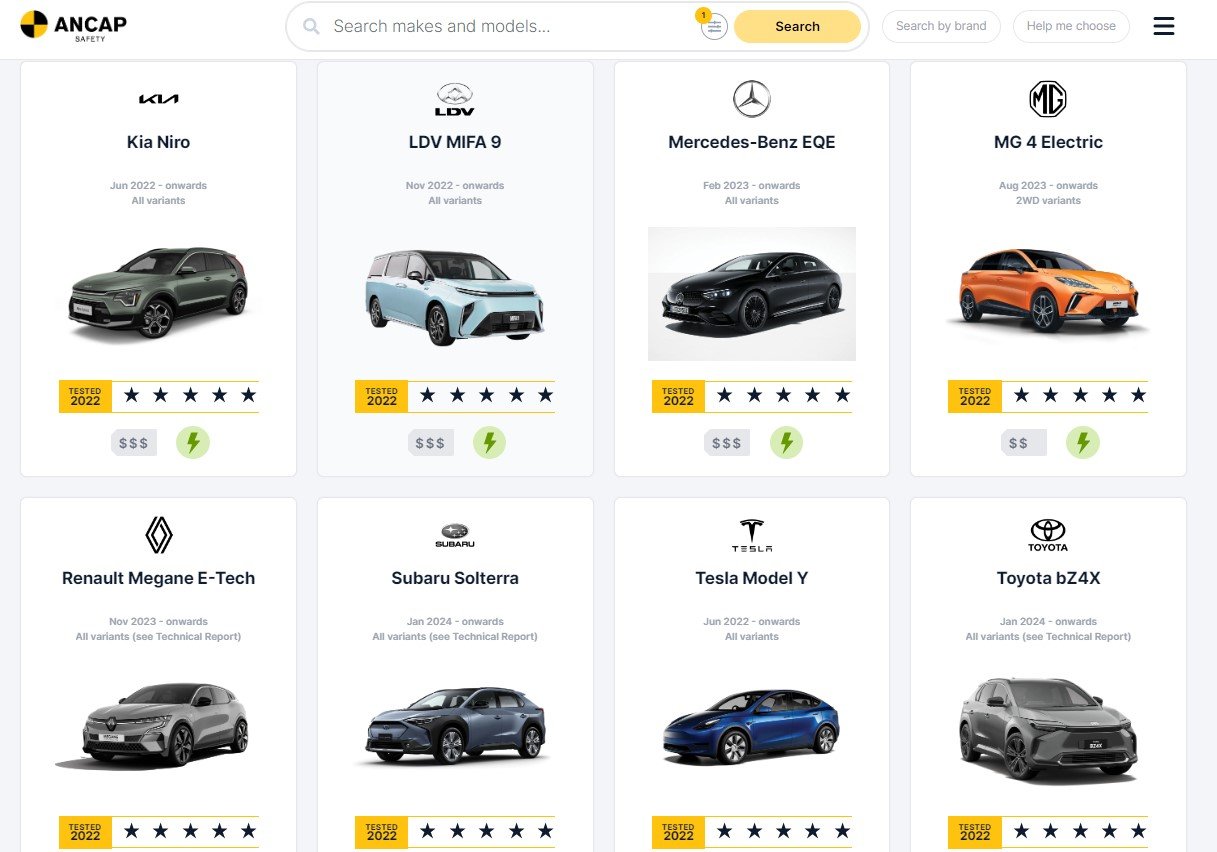
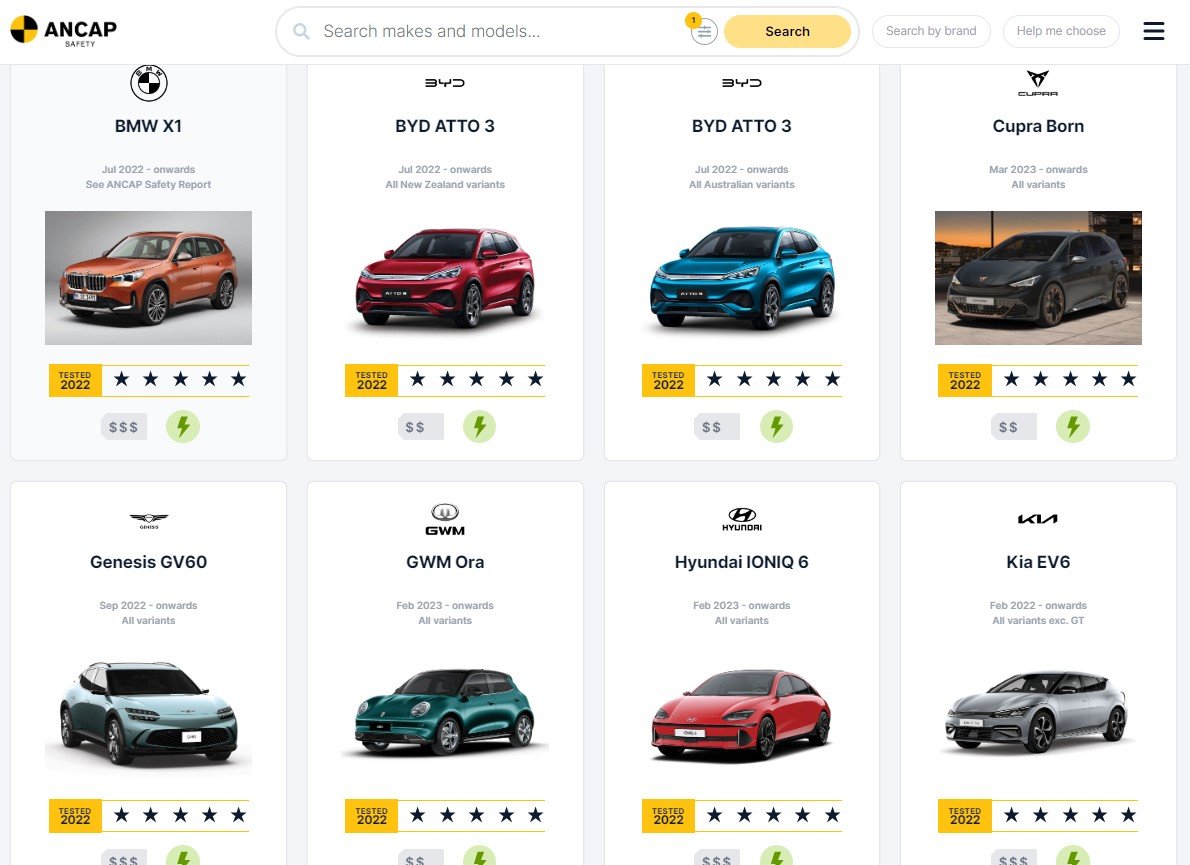
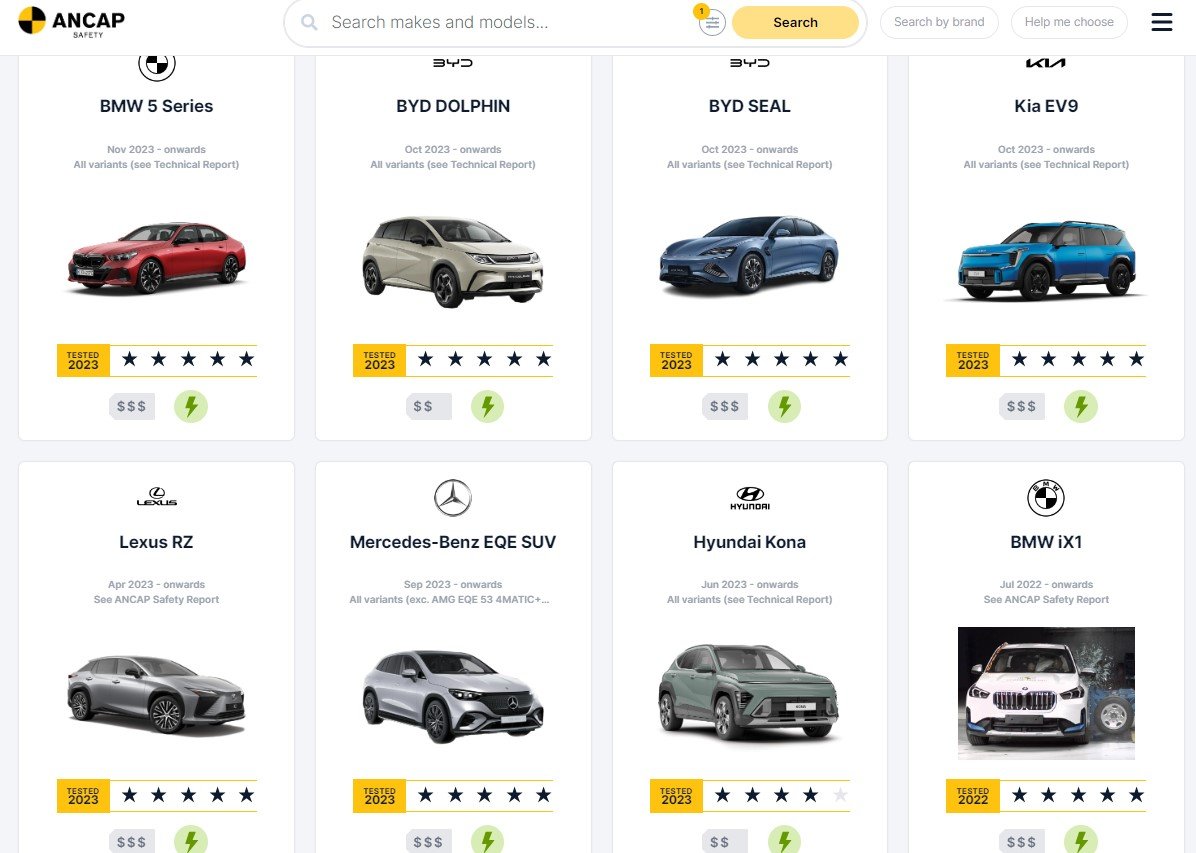
I'm highlighting this retroactive ratings approach because it means a particular vehicle can be launched here on a particular date long after having its safety rating assessed to an earlier set of easier evaluation protocols. It’s substantially easier to get five stars under old protocols.
As loopholes go, I'd suggest it seems like a pretty big one to me.
If you just want a plug-in hybrid because you're not quite yet ready to go full EV cult with an MG, ANCAP has helpfully cut and pasted the EuroNCAP determination for the MG HS, but nobody's been asked to crash test the plug-in so, as yet, it’s unrated.
The unknown safety element for all EVs hastily built off the back of existing combustion platforms is actually on-the-limit handling. This is fundamental crash avoidance, when you think about it, and frankly they are bound to be bad at that because of an intrinsic phenomenon known as modal separation.
Modal separation affects dynamics, especially at the limit. When you turn an internal combustion platform into an EV, you lower the mass centre relative to the roll centre. This changes the behaviour; it is either too soft in ‘bump and rebound’ or too stiff in roll - or both.
You get this departure from what were ideal settings in the combustion platform, to something fundamentally different because the same set of control architecture is trying to do two different things.
To my knowledge, nobody actually tests for this problem, at least not externally from carmaker R&D facilities, which is disgraceful.
Every engineer alive, even the bad ones, can see that this is a potentially dangerous compromise that is crying out to be independently assessed as a priority.
DRAWBACKS
TYRES
There’s no getting around this: Eco tyres are rubbish - from an owner’s point of view. Carmakers fit them because range is a big selling point and the low rolling resistance characteristics of eco tyres add a small amount of range in official tests. Like, less than five per cent.
Eco tyres are therefore great for the marketing department, but they’re crap to drive on - especially in the wet. When I got the standard eco tyres changed over for a set of high performance Michelin Pilot Sport 4s, everything changed about that car’s dynamics.
The Kona just became a heap more composed - like, it’s less likely to lift the inside wheel and spin it if you nudge it hard out of a corner. It just hangs on better - especially in the wet. And it’s more predictable at the boundary of grip and slip - even though the threshold is higher.
On a stack of friggin’ Superman comics (I’m an atheist - to me this is the same as a stack of Bibles) I can swear I didn’t think I’d enjoy driving an EV this much. That’s after changing the tyres.
SAVING THE PLANET: GREENWASHING
This is a virtuous idea, certainly. Saving the planet. But I’m absolutely certain driving an EV does not help save the planet, which is a euphemism, of course, for reducing the probability of the human race destroying itself and becoming extinct by virtue of making Earth uninhabitable - which is the trajectory we are on.
If you are a climate emergency-denying nutbag, you need to have a good, hard look in the mirror. Because denying the existence of climate change, and denying the fact that humanity is causing it, is absurd. Scientifically absurd. It’s up there with QAnon, anti-vaxxers, fluoride conspiracy, moon landing denial, etc. (I’m already so looking forward to the comments on all this. Please don’t disappoint me.)
But carmakers need to look at themselves in the mirror, too. They’re industriously leveraging climate virtue just to sell EVs. In reality they just want you to buy a new car - EV, internal combustion - they don’t care.
The lifecycle CO2 emissions break-even point for EVs (versus internal combustion) depends upon electricity grid composition, obviously. If you’ve got a coal-powered grid, it’s bad. But even in a place like Germany, it’s north of 100,000 kilometres. That’s to break even. If the battery doesn’t wear out. You’re not saving the planet, dude. Sorry to upset that apple cart. Actually, I’m not.
Humanity cannot consume its way out of the climate crisis by buying EVs - or anything else. The very concept is absurd.
Then there’s the problem of tyre-related emissions. You’ve probably never heard of this concept, so watch the full video report right for more >>
As you go about your process of finding the right EV for you, be aware of carmakers and particularly dealers trying to ‘greenwash’ you into thinking buying that electric vehicle is somehow going to miraculously stop climate change or significantly reduce your ‘carbon footprint’ - etc. etc.
Here’s how the car industry has been greenwashing us for years as they try to push their EV climate action message onto consumers:
In fact, carmaker advertising more-or-less has to avoid these kinds of grandiose claims without evidence. This was made possible by the ACCC cracking down (somewhat) on the practice of selling EVs on this fanciful idea that consumers can somehow fight climate change by purchasing an $80,000 two-tonne SUV made with lithium-ion batteries, by burning metallurgical coal, running on rubber tyres, held together with steel and aluminium suspension and driveline components, and using countless metres of copper wiring and with an interior made from all kinds of petro-chemical plastics.
Watch this full report below for more on this and how it affects you (because it does):
SOURCING RAW MATERIALS
While EVs are a net ‘plus’ for human health in advanced cities in predominantly western democracies, I’m pretty sure they’re a minus for human health in some other contexts.
If you’re one of those brain-dead EV evangelists who never pays attention to how the world actually functions, do me a favour, OK? Google the term ‘child labour cobalt mining’ and review the page one search results from reputable news outlets like the Financial Times and reputable organisations like Amnesty International.
(Cobalt is, of course, a major and somewhat non-negotiable component of lithium-ion batteries. So it’s not just EVs contributing to this exploitation - it’s portable electronic devices generally.)
The Financial Times has a particularly grim report from July 6, 2019 called ‘Congo, child labour and your electric car’ which should be mandatory reading for EV evangelists everywhere.
I note all these governments making bold proclamations about banning new internal combustion vehicle sales over the next 10-15 years. (Except it’s actually 14 countries, insofar as I can tell - meaning 179 countries are not doing this.) However, it is making a splash in the news.
And every carmaker with EV aspirations is down on its knees in front of them, metaphorically, lips parted, waiting to proceed, in the time-honoured tradition...
But I don’t see too many statements from those governments or those carmakers about sourcing the frigging cobalt ethically. Like, in some way that prevents some of the most reprehensible child exploitation imaginable.
So, I guess whether EVs are actually a plus for human health or not is an each-way bet, and largely an accident of birth, as things stand. And that could be fixed tomorrow.
NEW BRANDS: POOR CUSTOMER SUPPORT
The main problem with buying an EV is that you have to consider the new brands that have entered the market. But we essentially know very little about them. Brands like BYD and Polestar have not existed in Australia nearly as long as Hyundai and Kia, or Mitsubishi or Nissan, or even Tesla to a certain extent.
The reason brand longevity is important here is because, generally speaking, an EV is a substantial financial decision. You’re spending a huge chunk of money here, and there is a high-consequence likelihood the brand could fail to stand up commercially long-term.
This instability means newer brands might be more inclined to put profits first and consumers like you second when it comes to technical support and warranty claims. You should look for a brand that has not just longevity, but a solid reputation for prioritising good customer support.
Brands that demonstrate their impartiality, or even downright anti-consumer conduct, should be avoided at all costs.
Every time a carmaker treats one of its customers with contempt, rather than treating them with dignity, respect and as if they’re a potential brand ambassador in future, this should inform your decision.
POOR RELIABILITY
When you’re dropping five figures or even more than $100,000 in the case of a Kia EV9, you’d want to be confident that the brand has a history of good reliability. Fortunately, Kia has that reliability baked into its various model R&D.
Tesla, Polestar and Rivian were the worse vehicle brands for reliability in the recent 2024 J.D. Power Initial Quality Study of June 2024. What makes these three brands particularly terrible is that they only make EVs, meaning their products overwhelmingly out-perform all the other carmakers whose supposedly inferior combustion vehicles, and their EVs, are more likely to have reliability problems (due to the significantly large number of models and greater production volume).
And yet the EV-only brands are far worse. Watch the full report for more:
The facts here indicate you’re much better off buying an EV from an established carmaker if you want to spend the least amount of time waiting for it to be functioning again.
Remember at the beginning when we discussed rituals and the 18 days of wasted time you might’ve spent filling up with liquid fuel at the bowser? That saving could potentially go out the window if you’re buying an EV from Tesla, Rivian (not available in Australia anyway) or Polestar.
BAD ATTITUDES & CULT MEMBERS
It’s very easy to fall for the seductive minimalist interior of a Tesla, but the company’s underlying corporate culture relies heavily on zealotry and evangelism. Meaning, if you criticise the carmaker Tesla, its fans tend to come after you, even if you’ve been a member of the cult yourself.
Watch the full report here:
The main problem with this aspect to Tesla ownership, or possibly to overall EV ownership, is that there are some unsavoury people out there who believe so blindly in electric vehicles that their beliefs trump your consumer rights in the event of a major technical failure that should result in a refund.
Again, this is why it’s important to choose a carmaker with that good reputation that they prefer to keep intact by doing the right thing by you, lest you be thrown into the pit of vipers (also known as EV zealots) where you have to voice your concerns publicly or consider legal action just to get the kind of resolution you should be offered at the dealer in the first instance.
RESALE VALUE & DEPRECIATION
Fate is not without a sense of irony and that sentiment extend to Toyota, the supposed kings of mediocrity and resale value.
But it’s not just the Toyota BZ4X that is going to depreciate like a rock off the Harbour Bridge when it comes to trading it in. Teslas have been tanking in their resale values as well.
At this point, it looks quite certain that you’re going to hemorrhage value on your EV over time. Now, this doesn’t necessarily have to bother you nor discourage you from buying and EV. It’s more like a ‘Need to know’ aspect to the buying and selling process.
Perhaps a used EV would be better for this reason. Although there are drawbacks to that as well, such as depleted battery life.
FINANCE
Polestar, Volvo's nearly-Swedish Chinese EV brand, seems terrified of your future resale value, should you buy one, in Australia.
Resale value isn’t guaranteed, but it’s a silent factor that affects your bank account every day, and it’s important for many people. It’s also possible to cut depreciation in half at buying time when you can actually negotiate on the price you pay - but that’s rarely the case with buying an EV, especially from the likes of Tesla, Polestar, or BYD.
Any carmaker that uses the agency-type selling method, whereby you cannot negotiate because the price is set in stone, this is where you are going to take a hit. So, try to buy from a reputable carmaker whose dealers are allowed to negotiate on the price, because some of us actually have a budget.
PUBLIC CHARGING
The undeniably worst aspect of owning an electric vehicle today is the public charging infrastructure. It’s a national disgrace. It’s on-par with the utterly third-world NBN internet infrastructure.
If you need to park and charge in-town and not at some pointlessly located university charging bay, it only takes one inoperable charger, or simply the wrong time of day, or something as innocuous as a long weekend where your quiet regional town becomes a tourist hotspot - and suddenly every charger behind the local council office or beside the regional arts centre to be full.
Or it could be even worse, overflowing with Teslas, Nissan Leafs, Konas and EV6s and Ioniq 5s and BYD Atto 3s and MG ZS EVs that the queue stretches down the street. The rich young dude in his Porsche Taycan has all the time in the world, but you might not if you’re a native to the area and you forgot it was the King’s birthday long weekend.
Or you’re simply on a Sunday drive, it’s a 35-degree day, and the kids are hungry, but you’re not going to make it home with just 80km of range left.
Just a few years ago (May 2022), the Kia EV6 was launched in Canberra, roughly 300 kilometres away from the AutoExpert Fatcave in Sydney.
What ensued was an arduous journey filled with broken or faulty chargers in a series of stops at multiple locations en route from the nation’s capital city to the most populated city in Australia (at that time).
As of 2024, things have improved significantly, but overall, the state of public charging remains a challenge. There isn’t just another charging station around the corner like you would expect driving a combustion vehicle.
The major cities might seem reasonably easy for finding charging, the fact is having to go 5 or 10 minutes out of your way in the event a charging station is either full or out of order - that sucks.
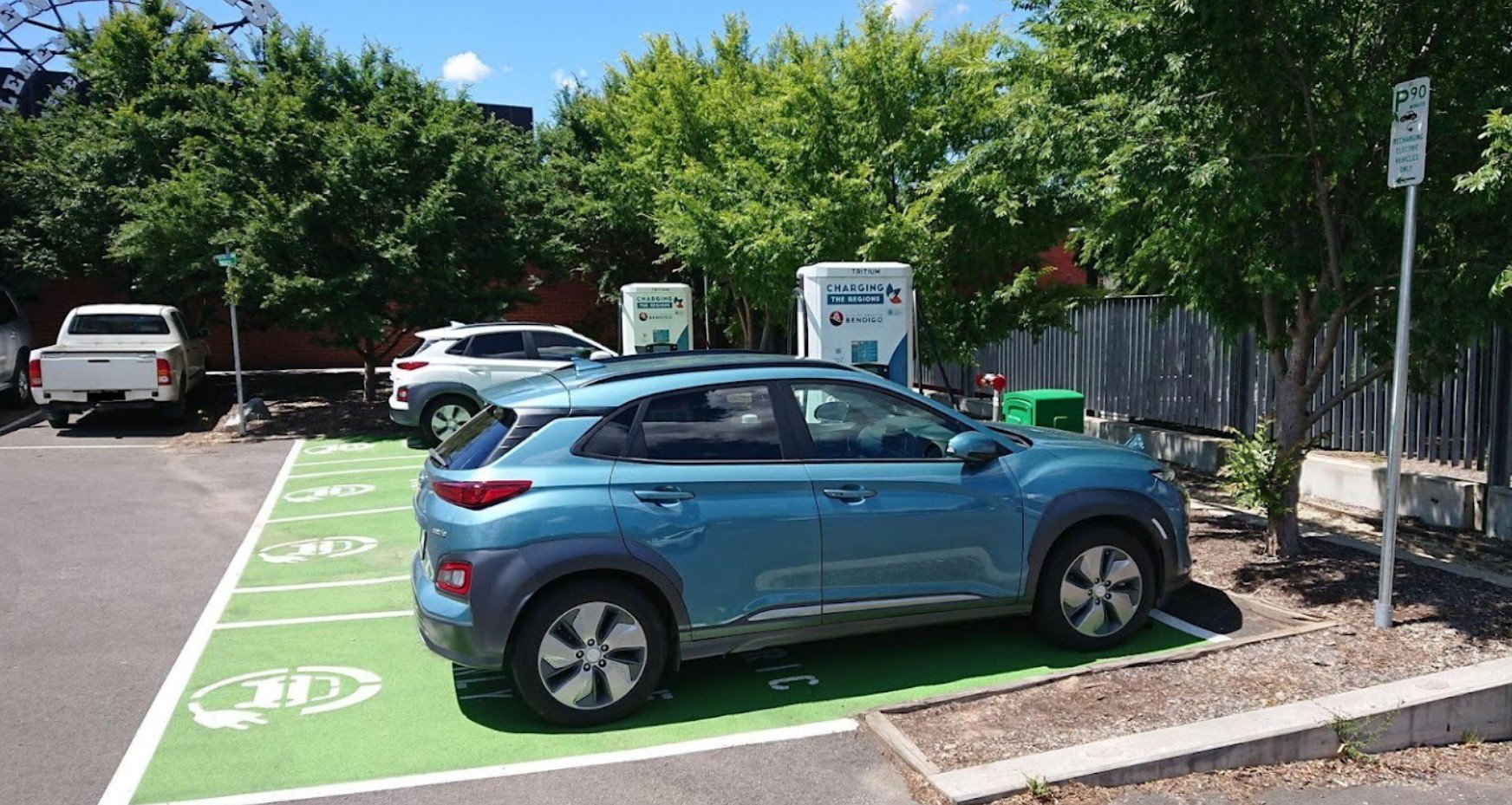
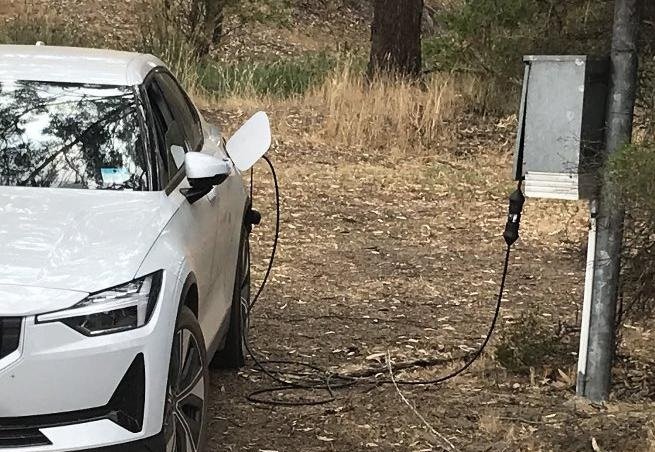
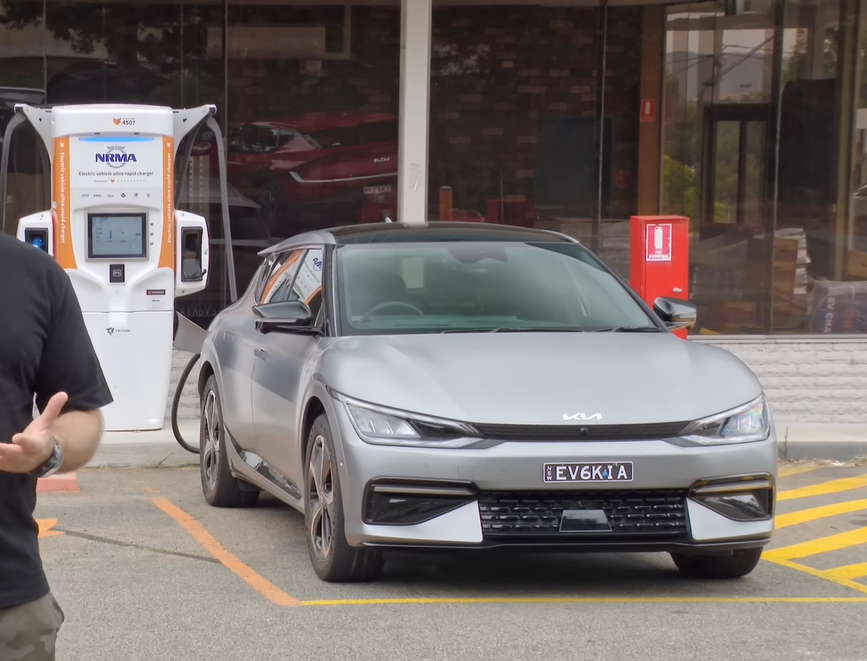
And then if you look in the regional towns and provincial cities, things get even worse. Firstly, you have to exclude the Tesla Destination chargers because unless you have a Tesla, you can’t use them anymore. Then you’re relying on small charging solutions by either Evie or ChargeFox (the latter of which has grown its network substantially in recent years), and they aren’t always located in the ideal spots in-town.
Some are located several blocks away from the main street, or you have to get off the highway entirely, navigate through strange towns, hope there’s nobody using the one or two electron bowsers, and then find something to do for however long it’s going to take to charge. There are only so many food stuffs you can shove down before you really need to get going again.
But this is all moot if the independently owned chargers, say from Tritium or NRMA, are even working at all. Oh sure, you can ‘check on the app’ and generally the apps tell you if a charger is inactive or broken, but not always. And then there’s the onus on you to have the right app or apps.
BUYING AN EV & YOUR QUESTIONS: 10,000kms in an EV
Conclusion
Electric vehicles are certainly here to stay, in some varying capacity within the national fleet. And for good reason. They do make good sense, even if they have started expensive and gradually came down in price with the help of federal government incentives. Unfortunately, those subsidies are going to end in 2025.
As much as we’ve enjoyed internal combustion - rather a lot if you’ve grown up in the modern world in the last 80 years - that doesn’t have to change. You can still enjoy combustion vehicles and also have an EV.
Equally true is that there’s nothing whatsoever therapeutic about visiting a filling station. There’s just not. Liquid fuels are a miracle: a staggering amount of energy, transferred so fast, and so incredibly cheaply…
And yet the user experience at the filling station is somehow soul-crushing, especially if you have experienced the convenience and time-saving joy of just plugging in your suburban towncar in the drvieway at home. On behalf of humanity, fuel retailers can kindly stick their ‘2-for-1’ Kit-Kat offer up their arses.
In other words, as EVs do gain momentum, reach critical mass, and push the filling station ritual over the edge, one day, in the future, it’s fair to say that you probably won’t spend much time grief-stricken afterwards. And you can start planning what to do with those 18 days of your live you just got back simply buy plugging in at home.
Remember how much time you got back when you were working from home during the 2020-2021 lockdowns? You did your job from the home office and saved as much as 4 hours per day by not having to catch the bus or train or sit in bumper-to-bumper traffic.
Perhaps an electric vehicle is exactly what you need in your life after all.
Hopefully this extensive, detailed buying guide has helped you make that informed choice.


































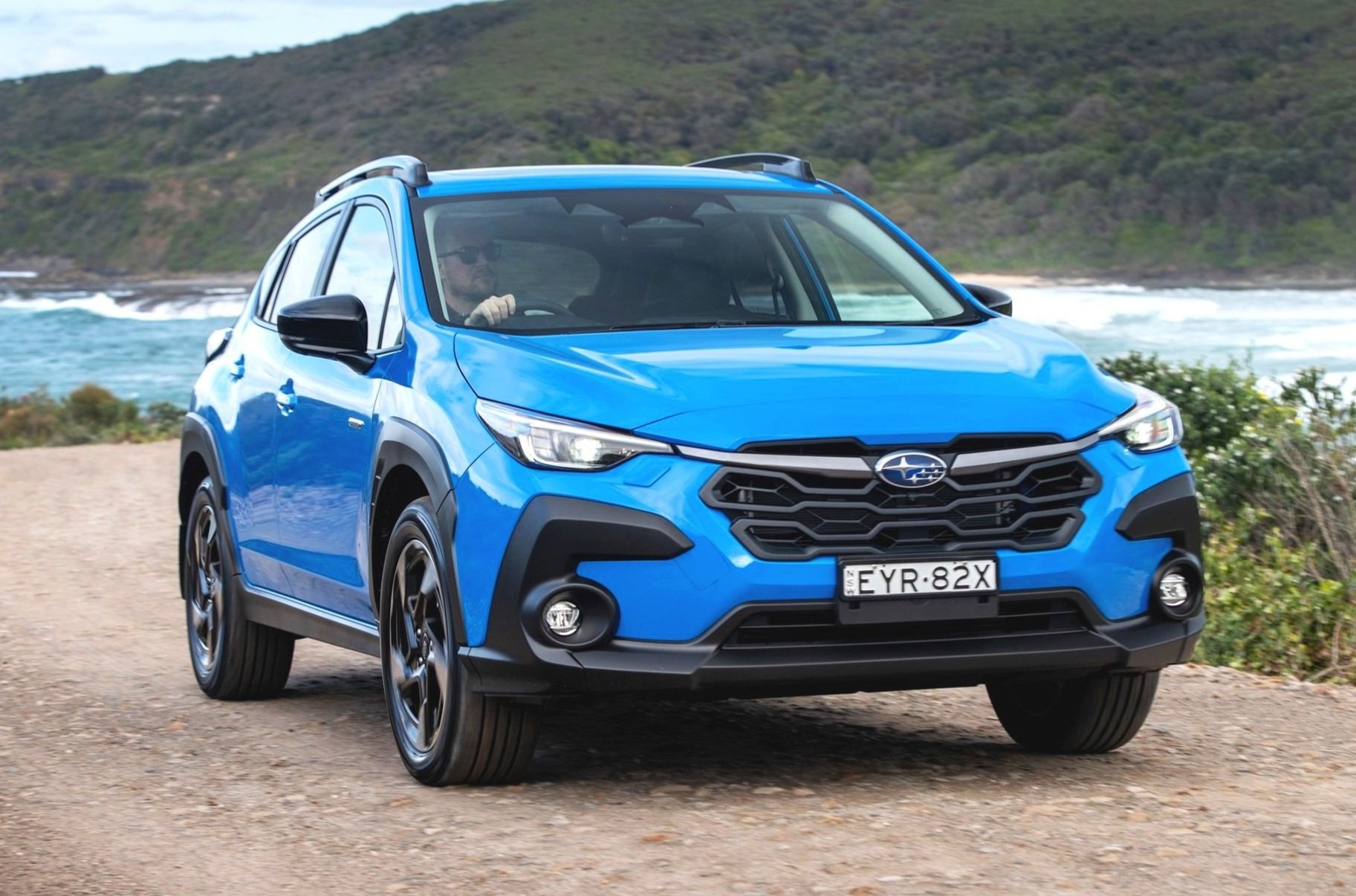
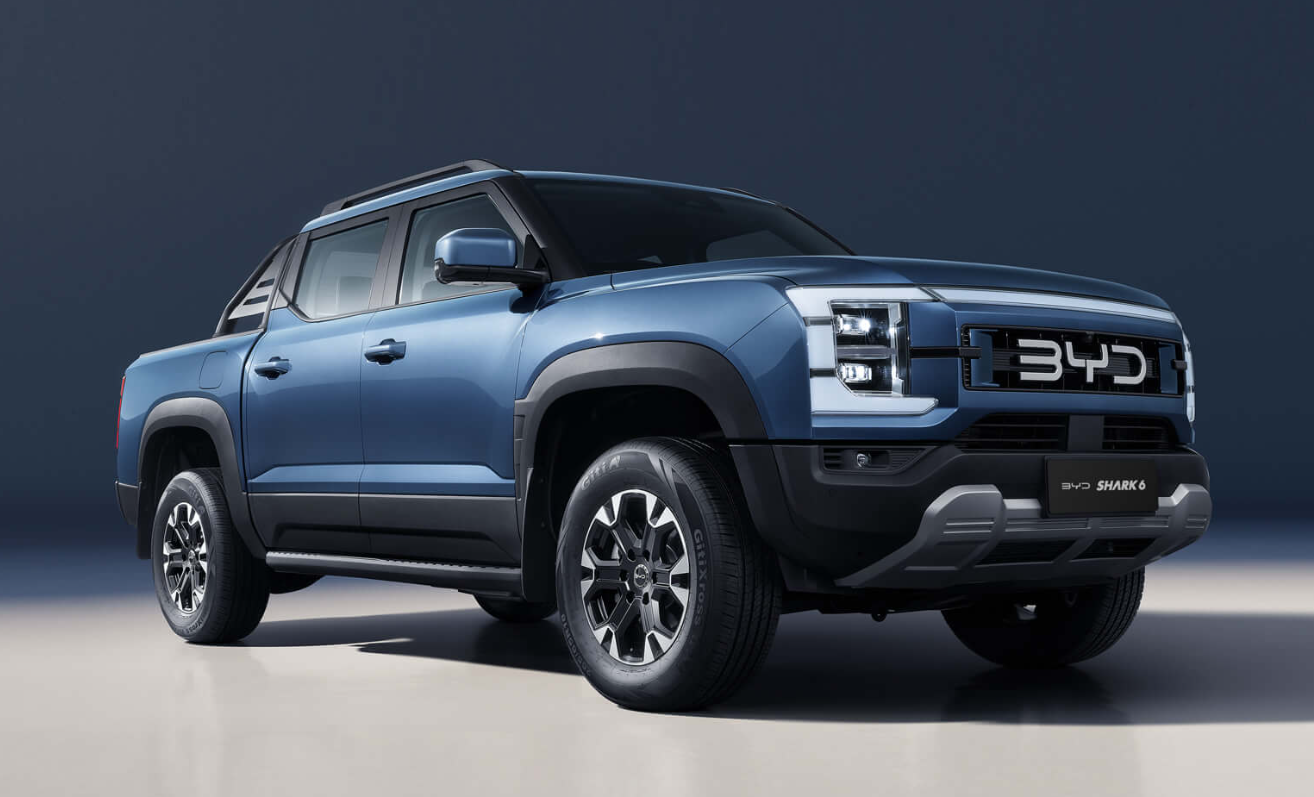



The soft-roading Subaru Forester packs a punch, and is one of the safest, most practical and capable SUVs on sale today. It’s also a great value, nicely driving and popular five-seater - with an all-new version coming soon…